PHYS 122 - Chapter 25 - 29 Practice Problems for Midterm 2 (UW)
1/74
Earn XP
Description and Tags
All lecture slide clicker questions from Chapter 25 - 279, all optional practice problems from Chapter 25 - 29, and all reading quiz questions from Chapter 25 - 29.
Name | Mastery | Learn | Test | Matching | Spaced |
|---|
No study sessions yet.
75 Terms

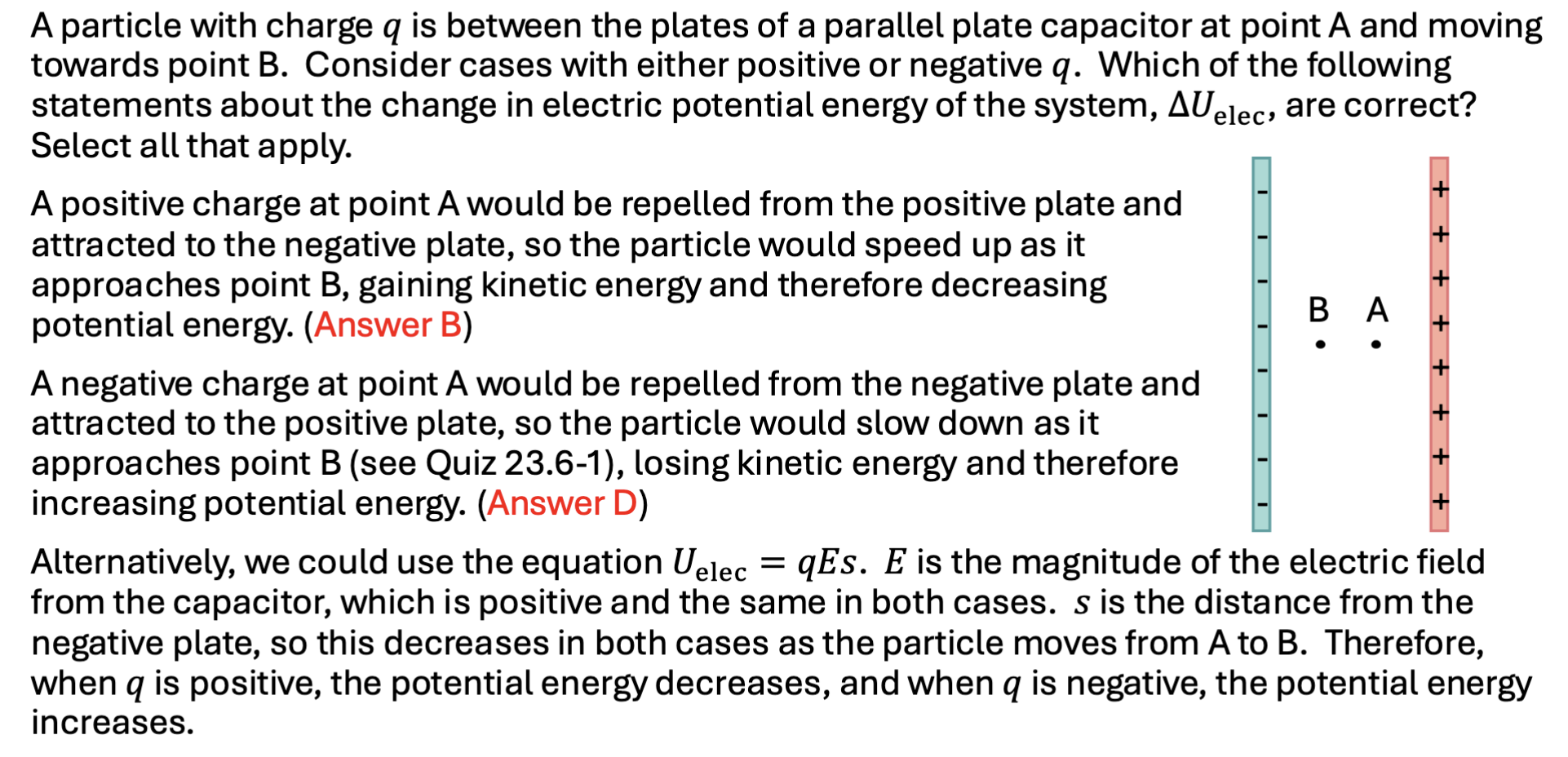

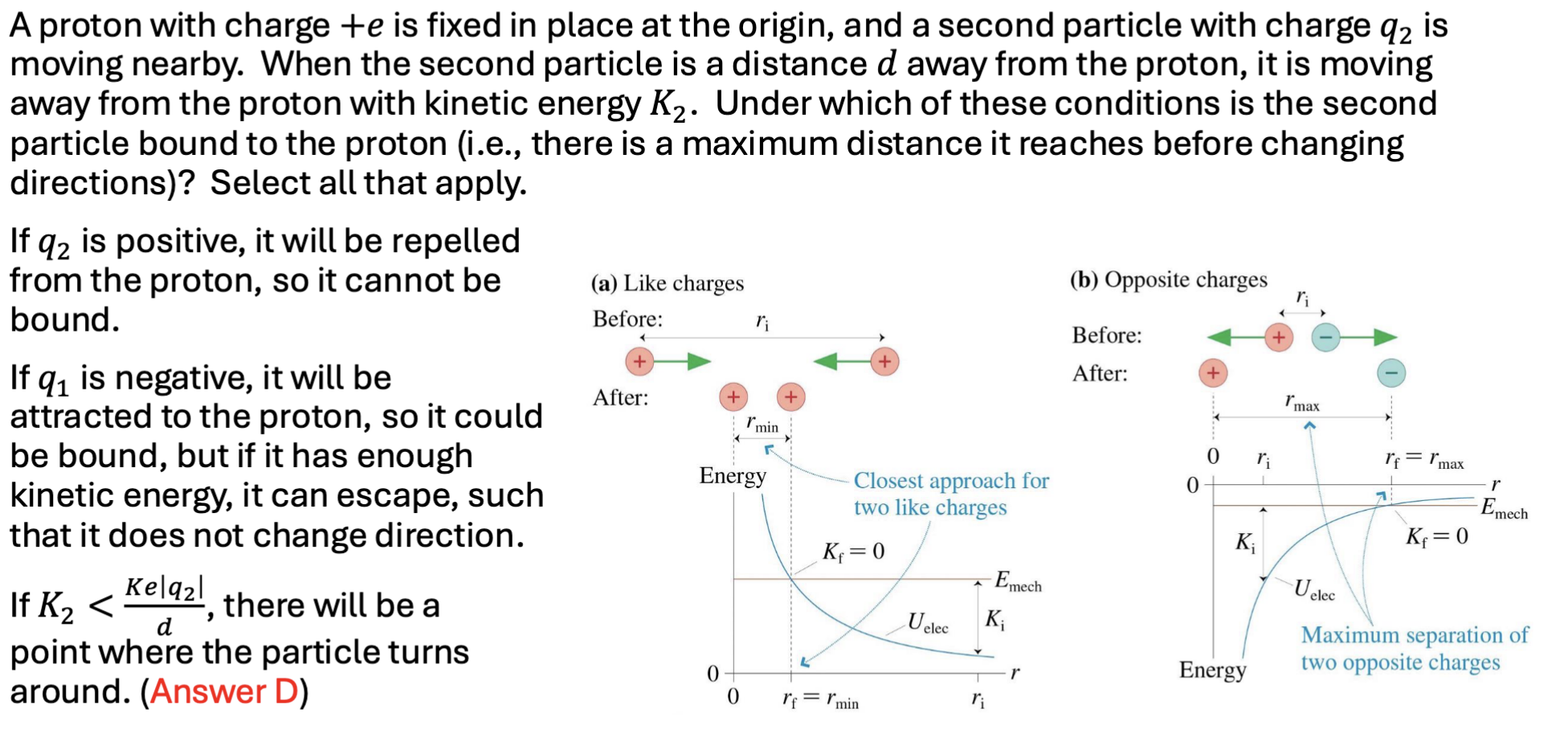

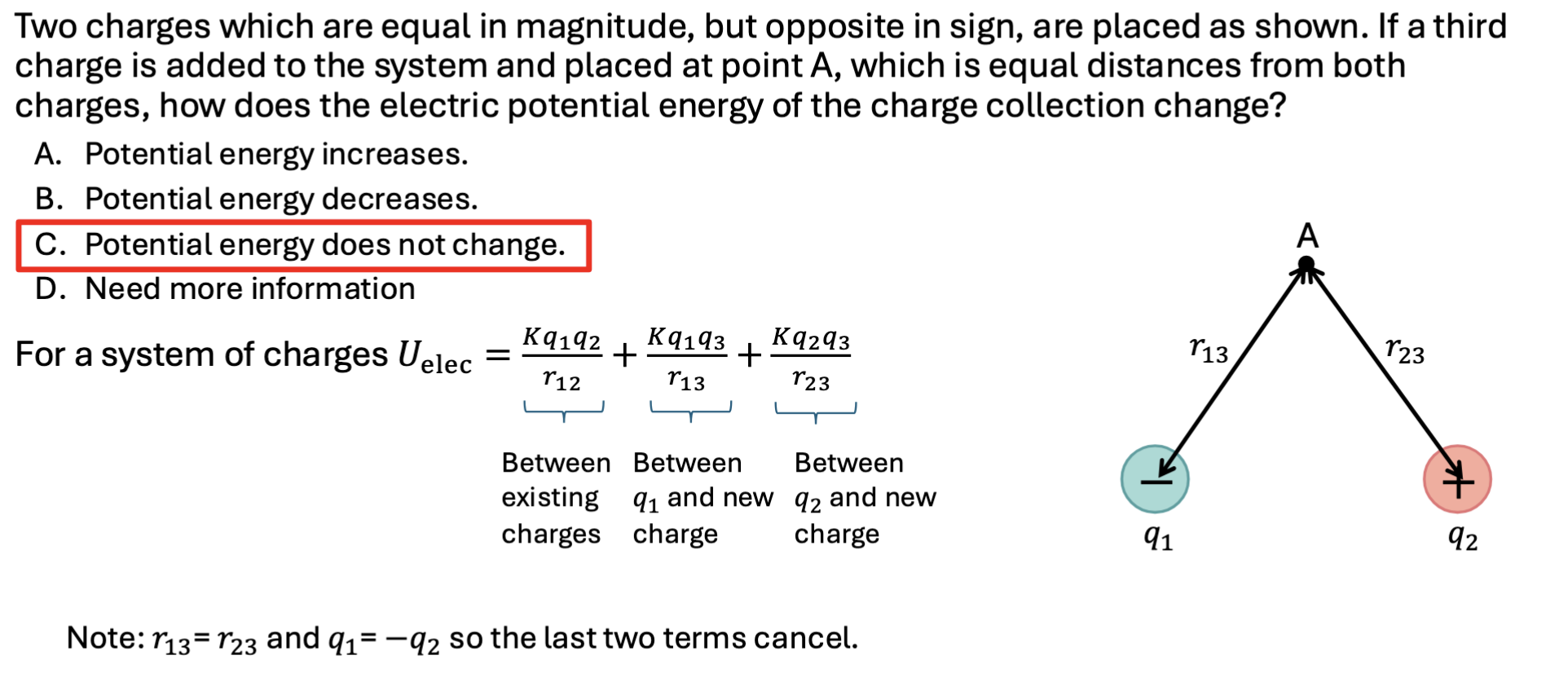
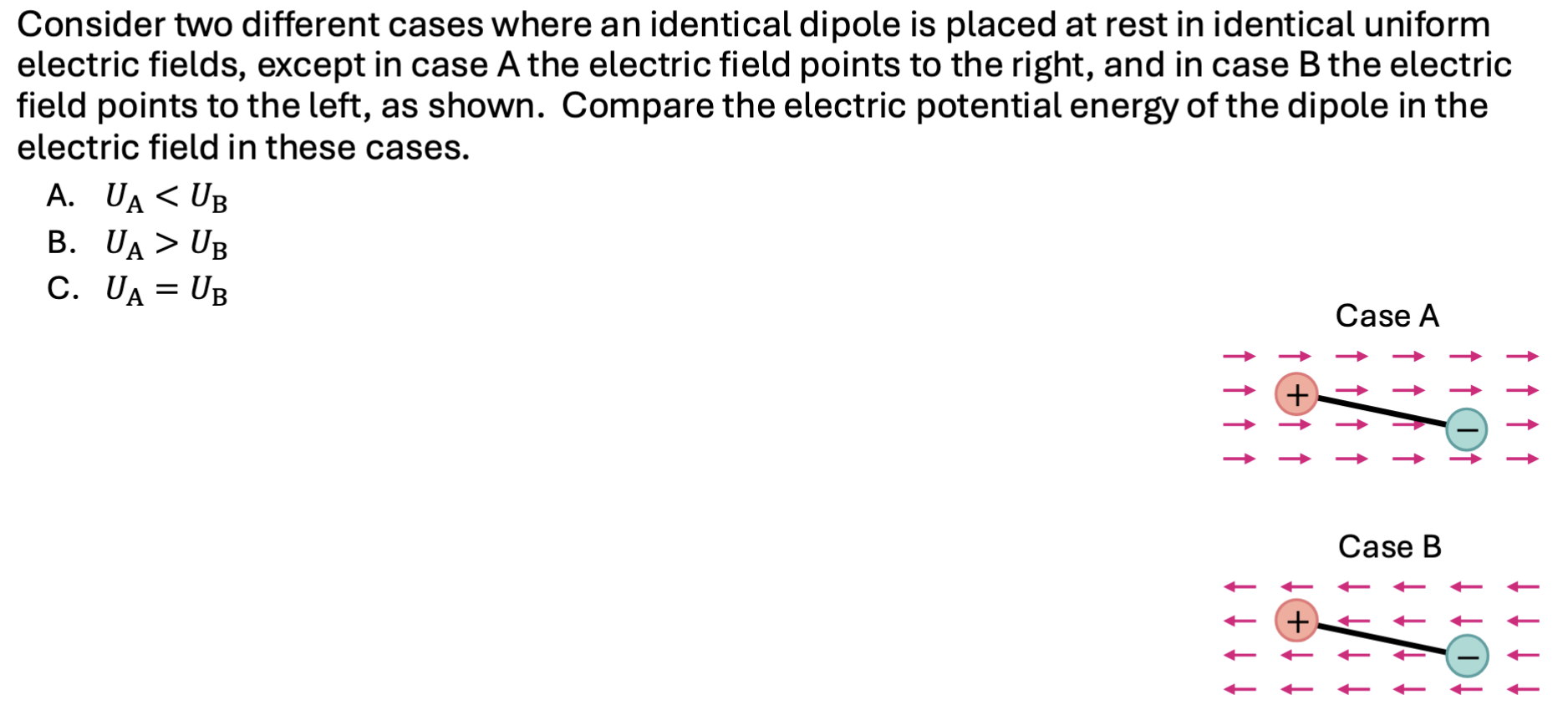
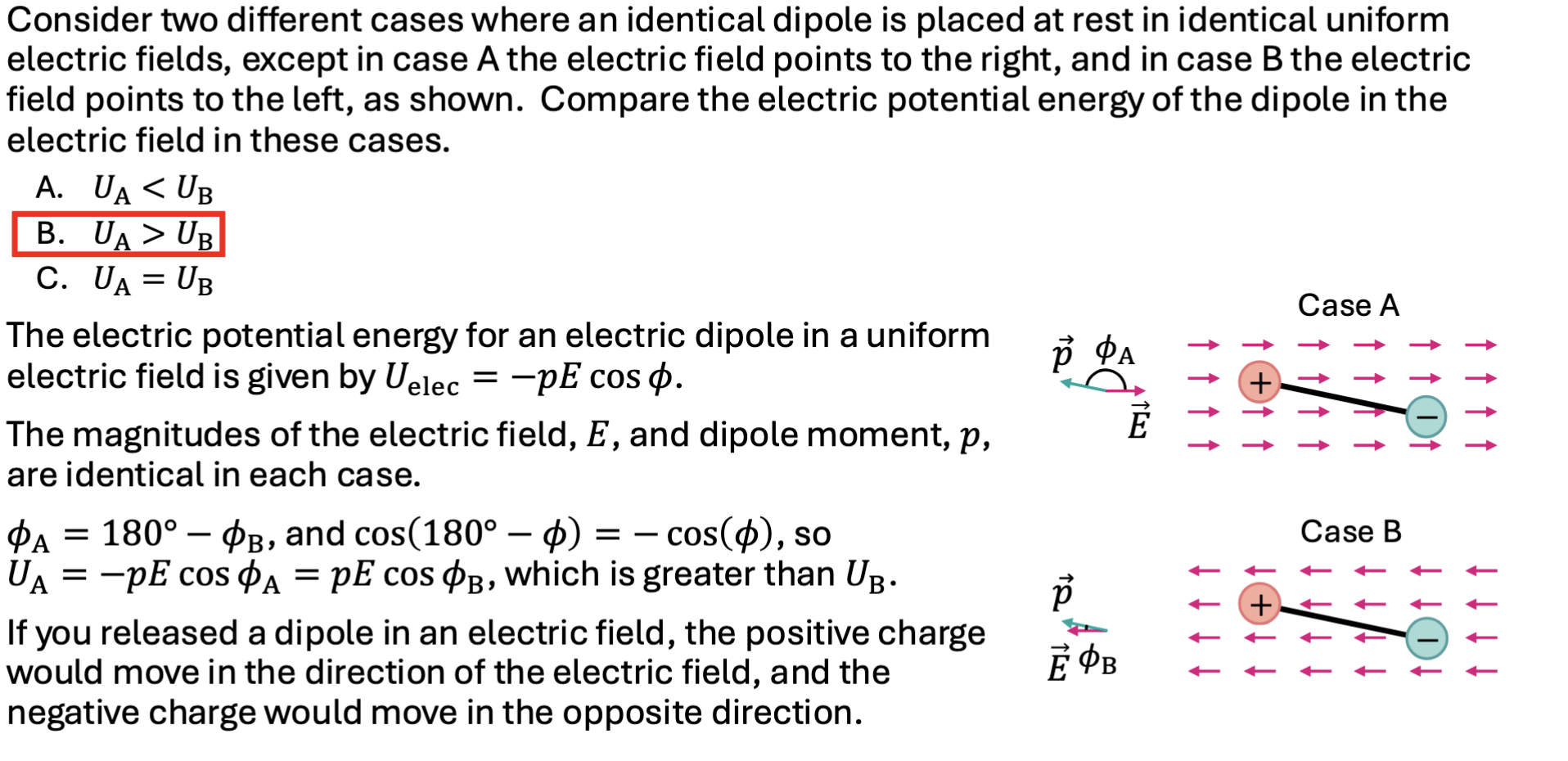
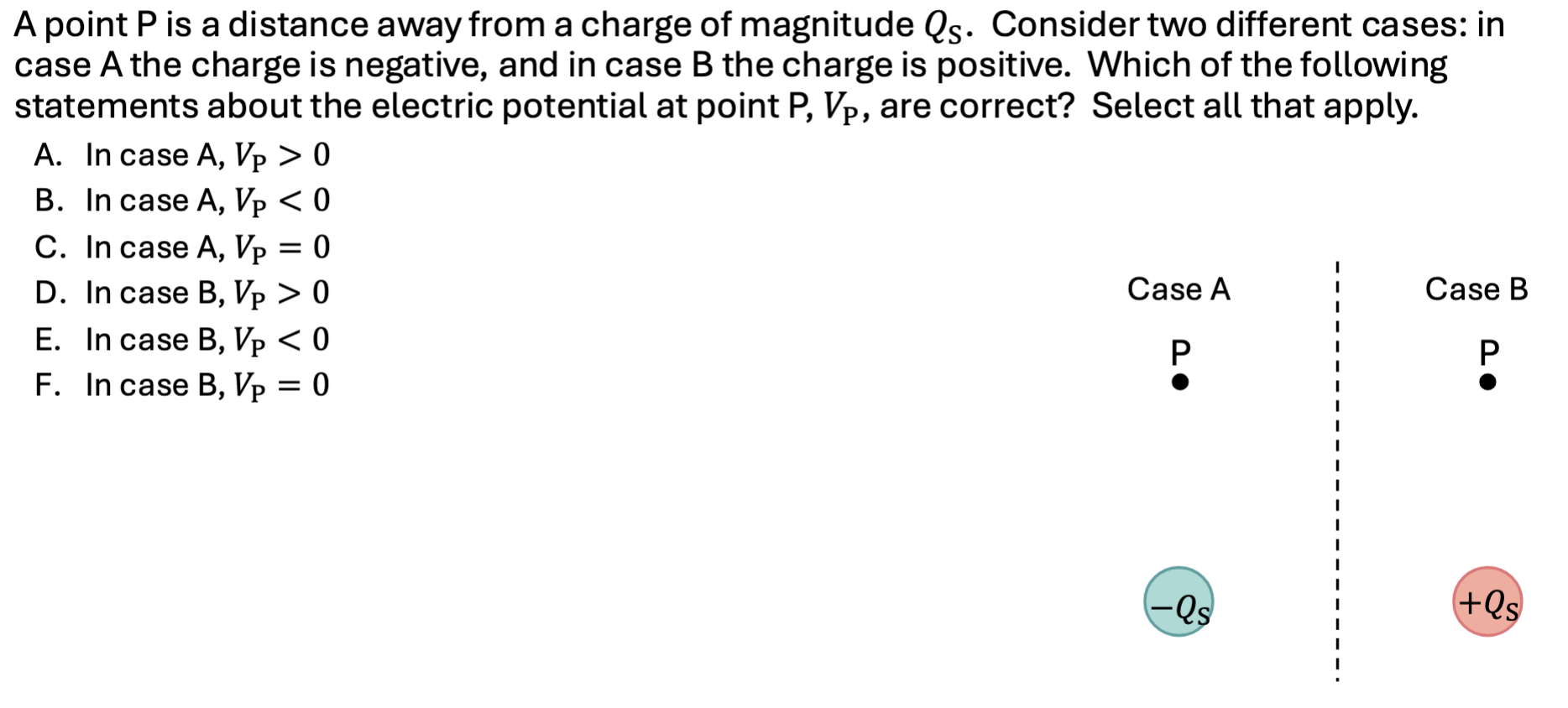
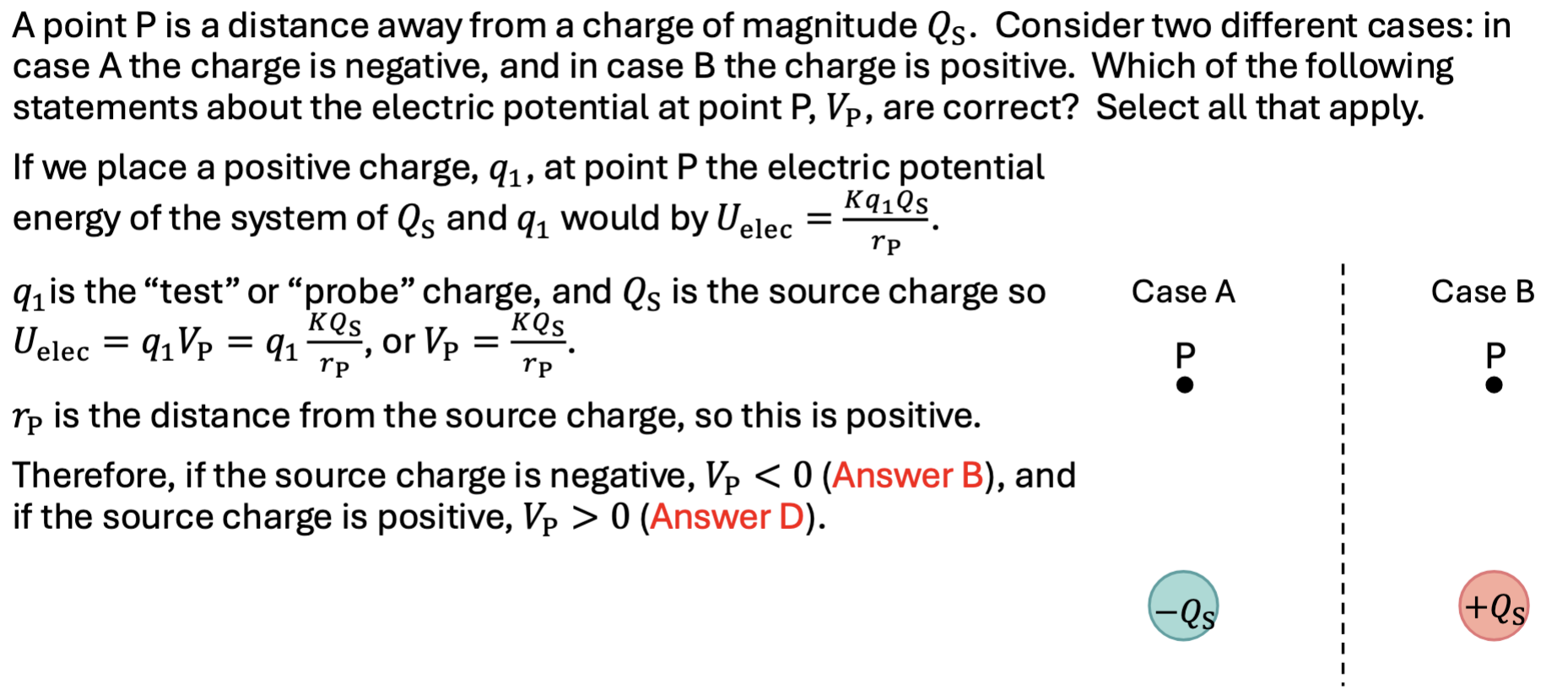

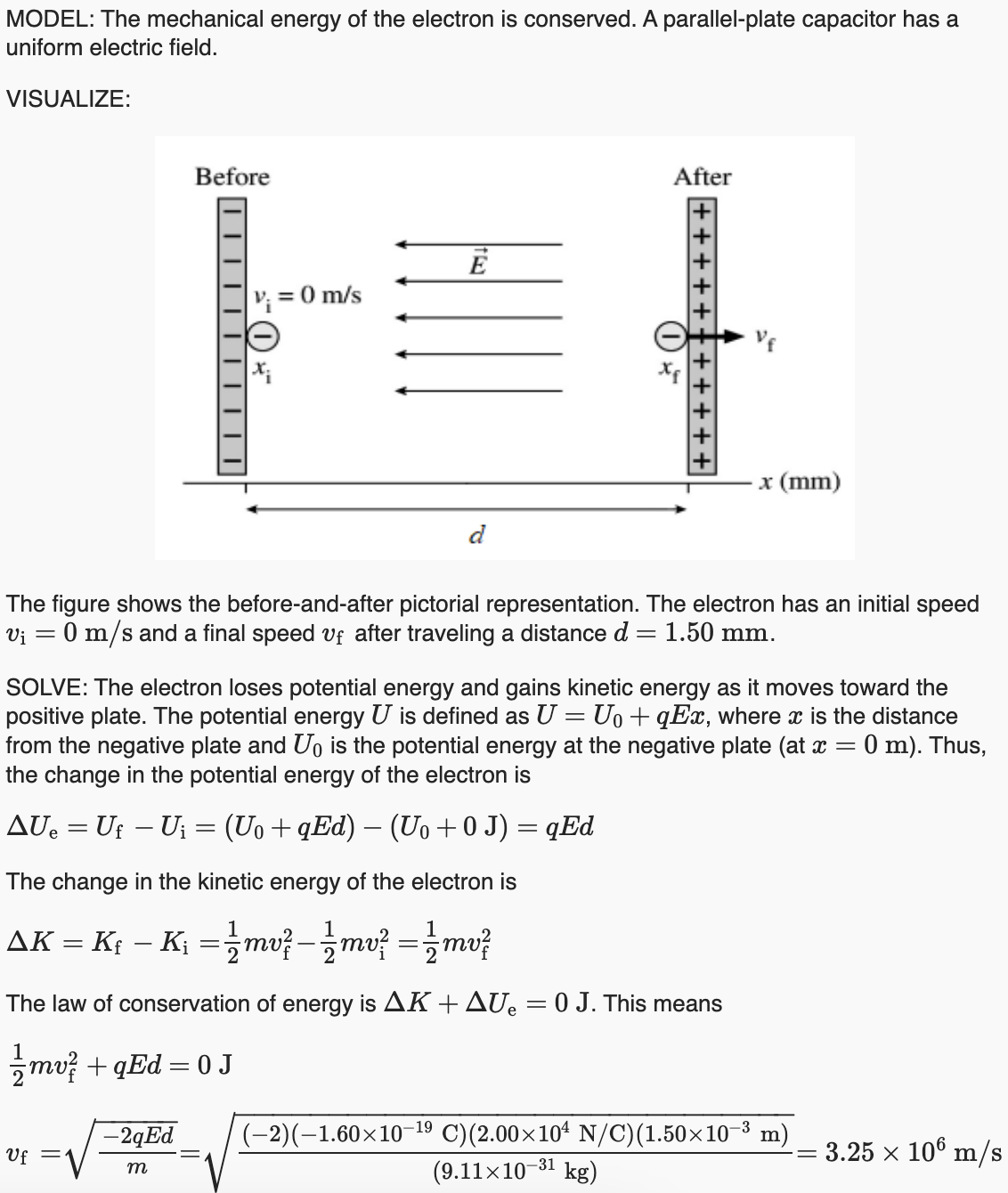
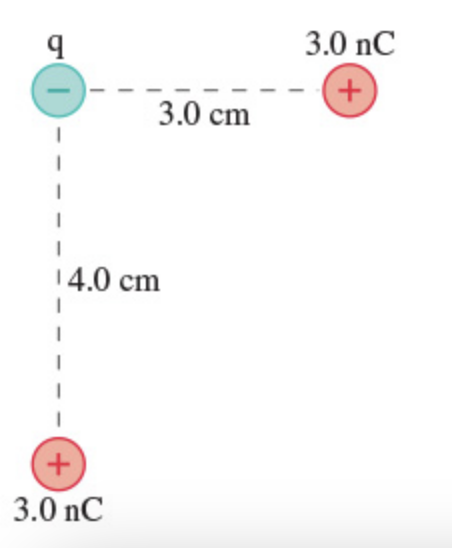
What is the electric potential energy of the group of charges in (Figure 1)? Assume that q = -2.0 nC.
U = -1.5 × 10-6
A water molecule perpendicular to an electric field has 7.00×10−22 J more potential energy than a water molecule aligned with the field. The dipole moment of a water molecule is 6.2×10−30Cm. What is the strength of the electric field?
1.13 × 108 N/C
What is the speed of a proton that has been accelerated from rest through a potential difference of -1000 V ?
v = 4.4 × 105 m/s
An electron with an initial speed of 5.00×105 m/s is brought to rest by an electric field. Did the electron move into a region of higher potential or lower potential? What was the potential difference that stopped the electron?
Higher Potential
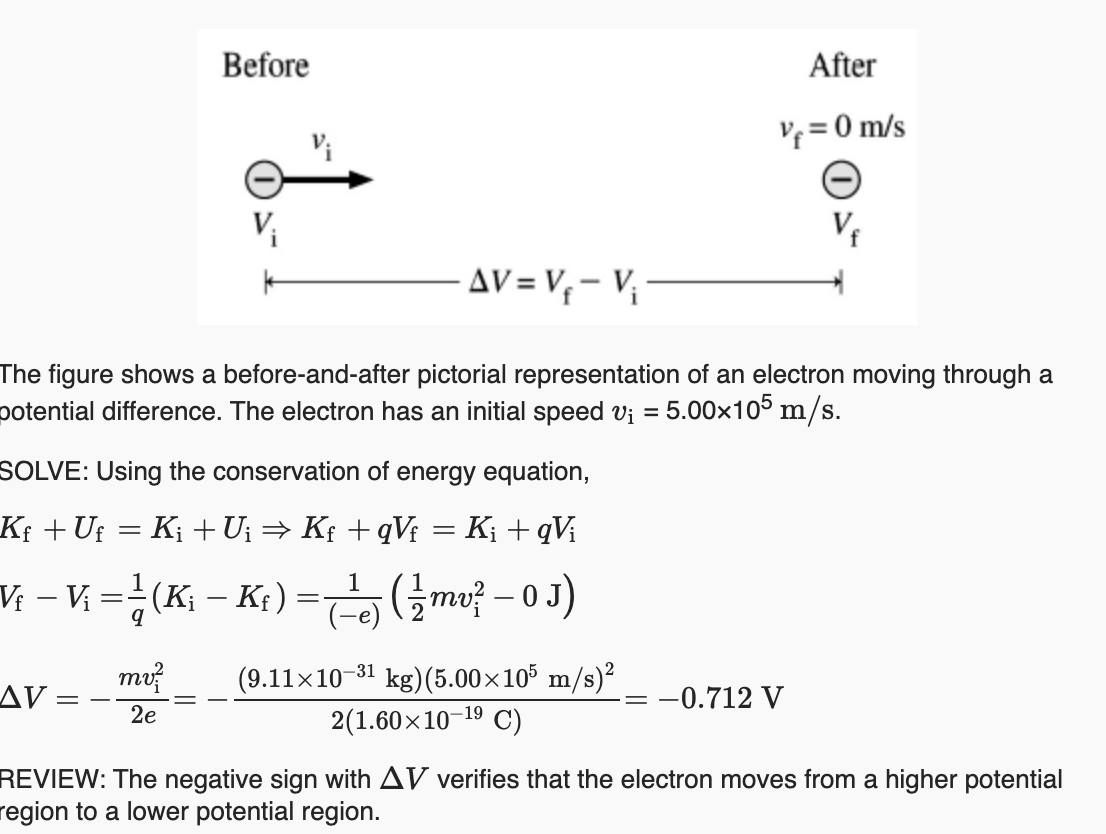
Two 1.6-cm-diameter disks spaced 1.9 mm apart form a parallel-plate capacitor. The electric field between the disks is 5.1×105 V/m. What is the voltage across the capacitor? An electron is launched from the negative plate. It strikes the positive plate at a speed of 2.1×107 m/s. What was the electron's speed as it left the negative plate?
Δ V = Ed = (5.1 × 105 V/m)(rm) = 969 V
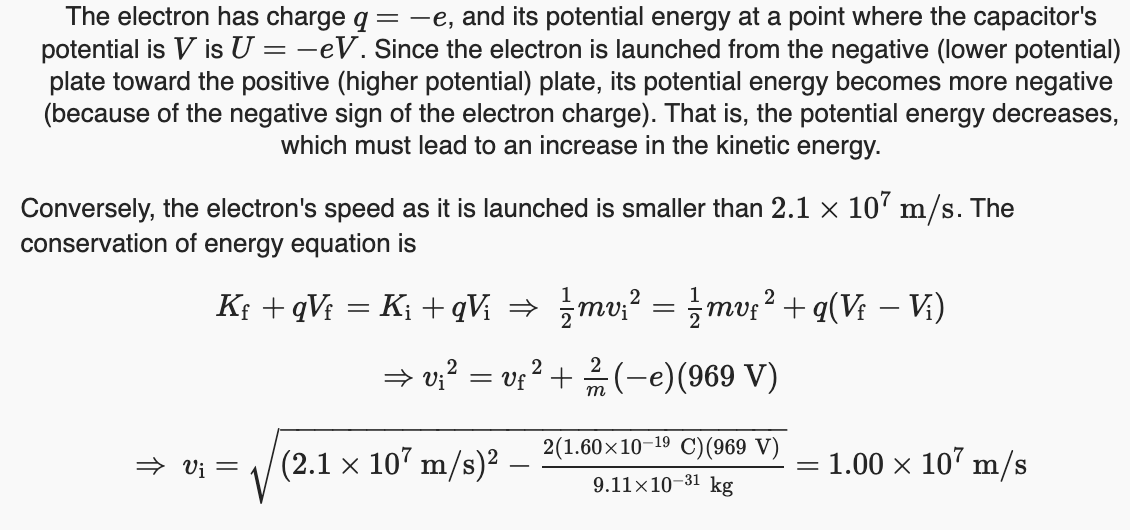
In a semiclassical model of the hydrogen atom, the electron orbits the proton at a distance of 0.053 nm. What is the electric potential of the proton at the position of the electron? What is the electron's potential energy?
27.2 V
-4.35 × 10-18 J

What is the electron's potential energy?

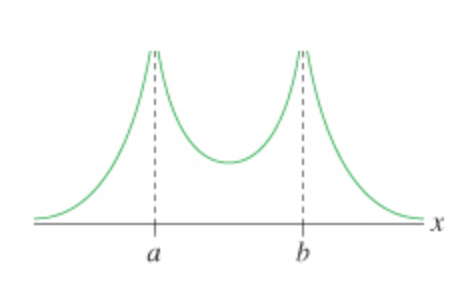
Two point charges qa and qb are located on the x-axis at x=a and x=b. The figure is a graph of V, the electric potential. (Figure 1) What are the signs of qa and qb? What is the ratio |qa/qb|?
Both qa and qb are positive
|qa/qb| = 1
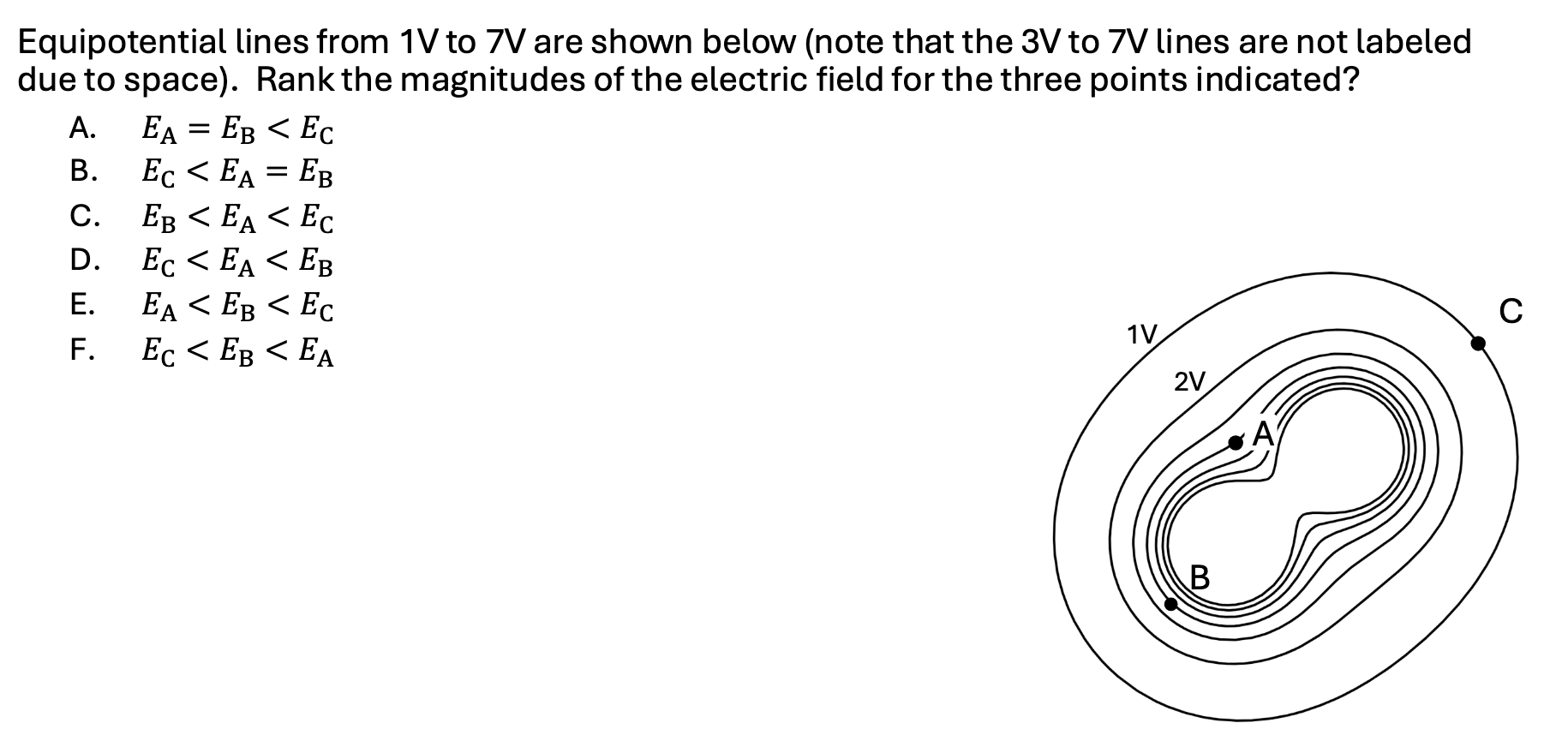
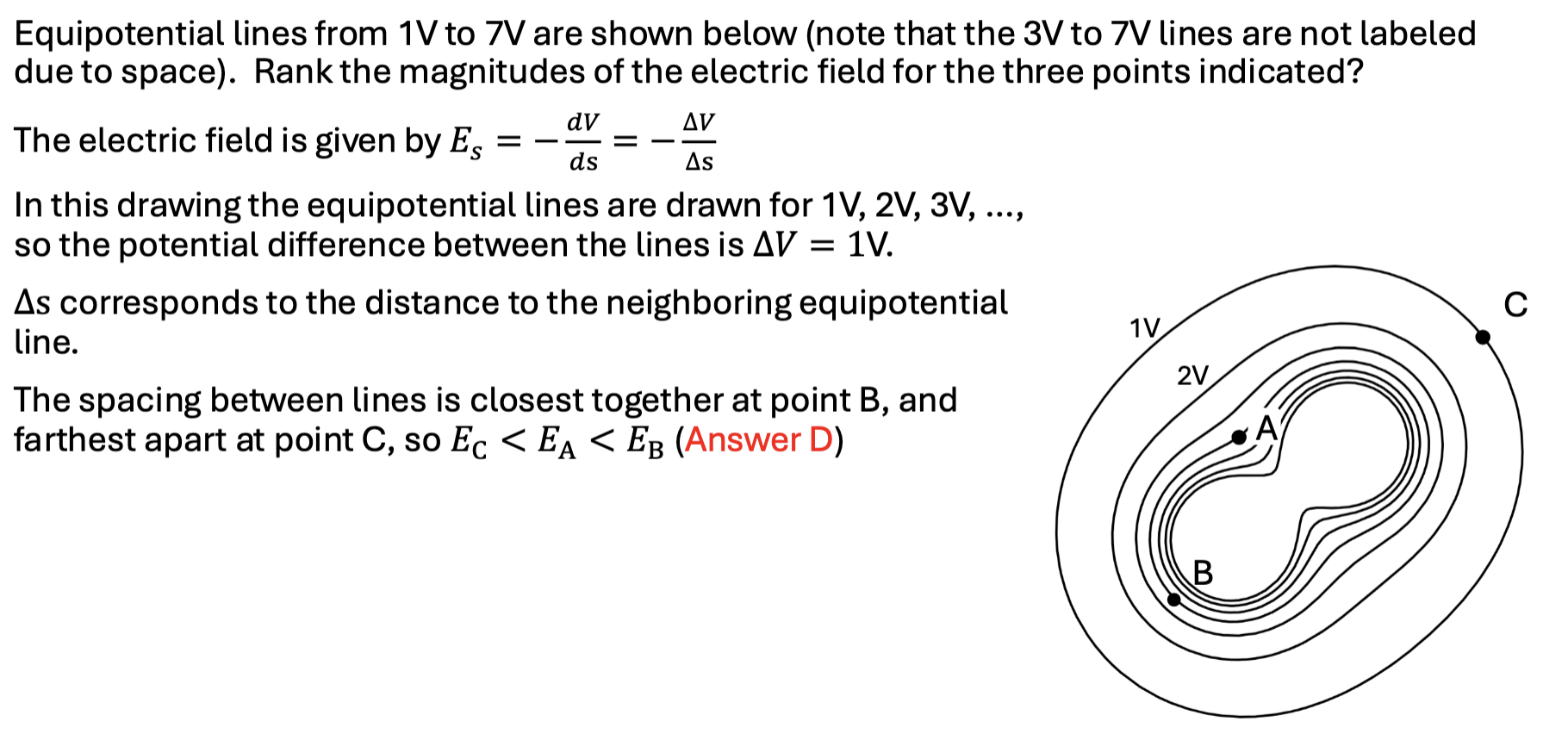
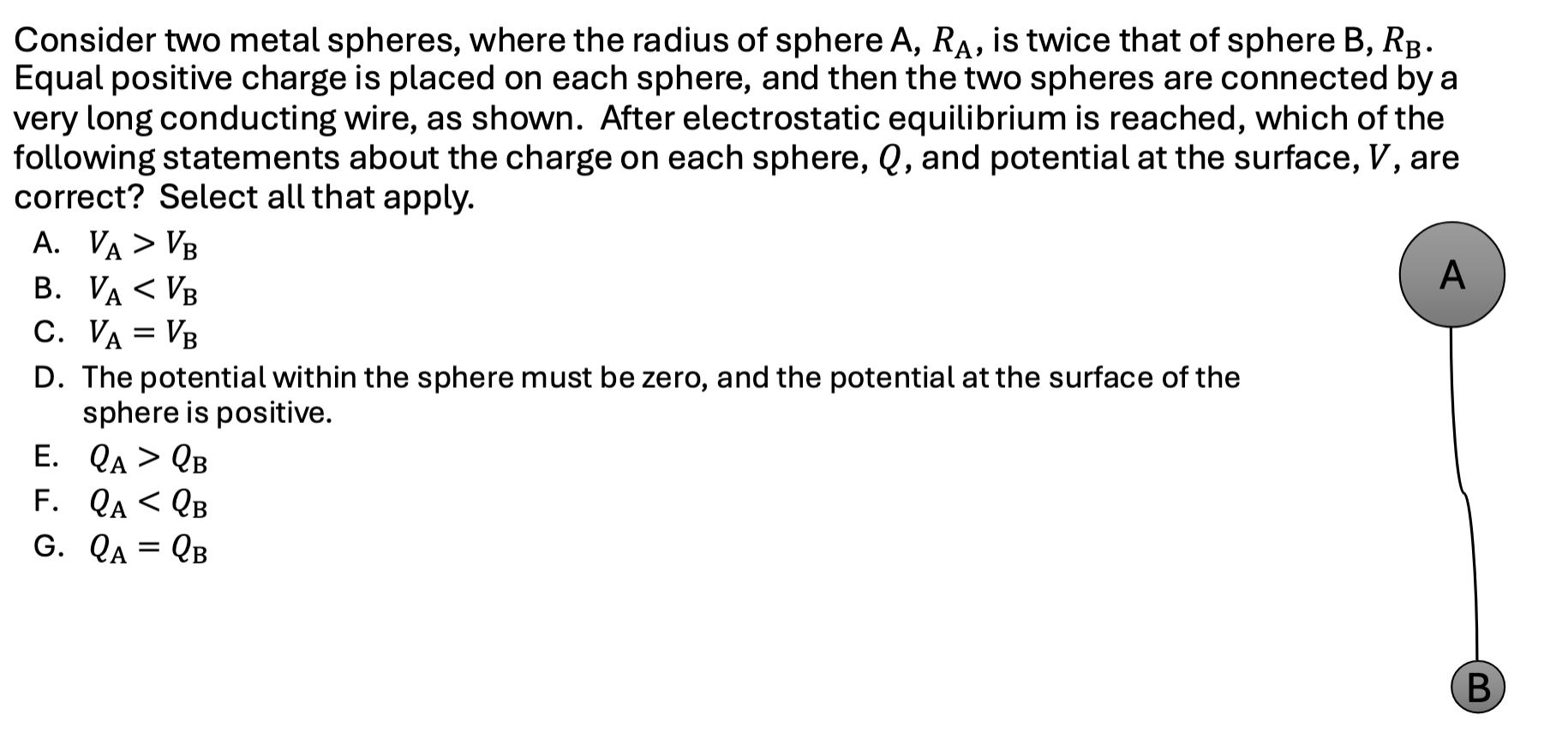
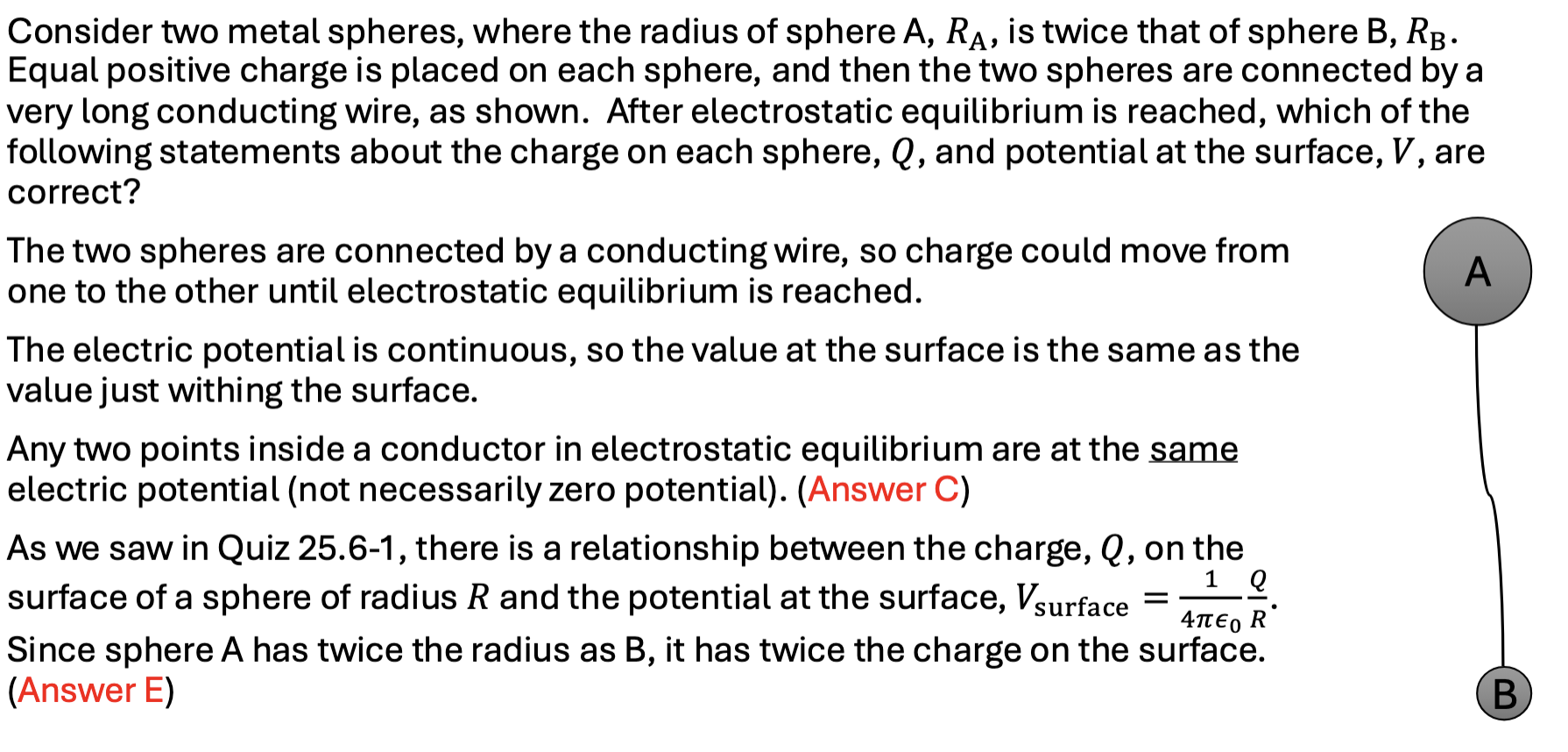



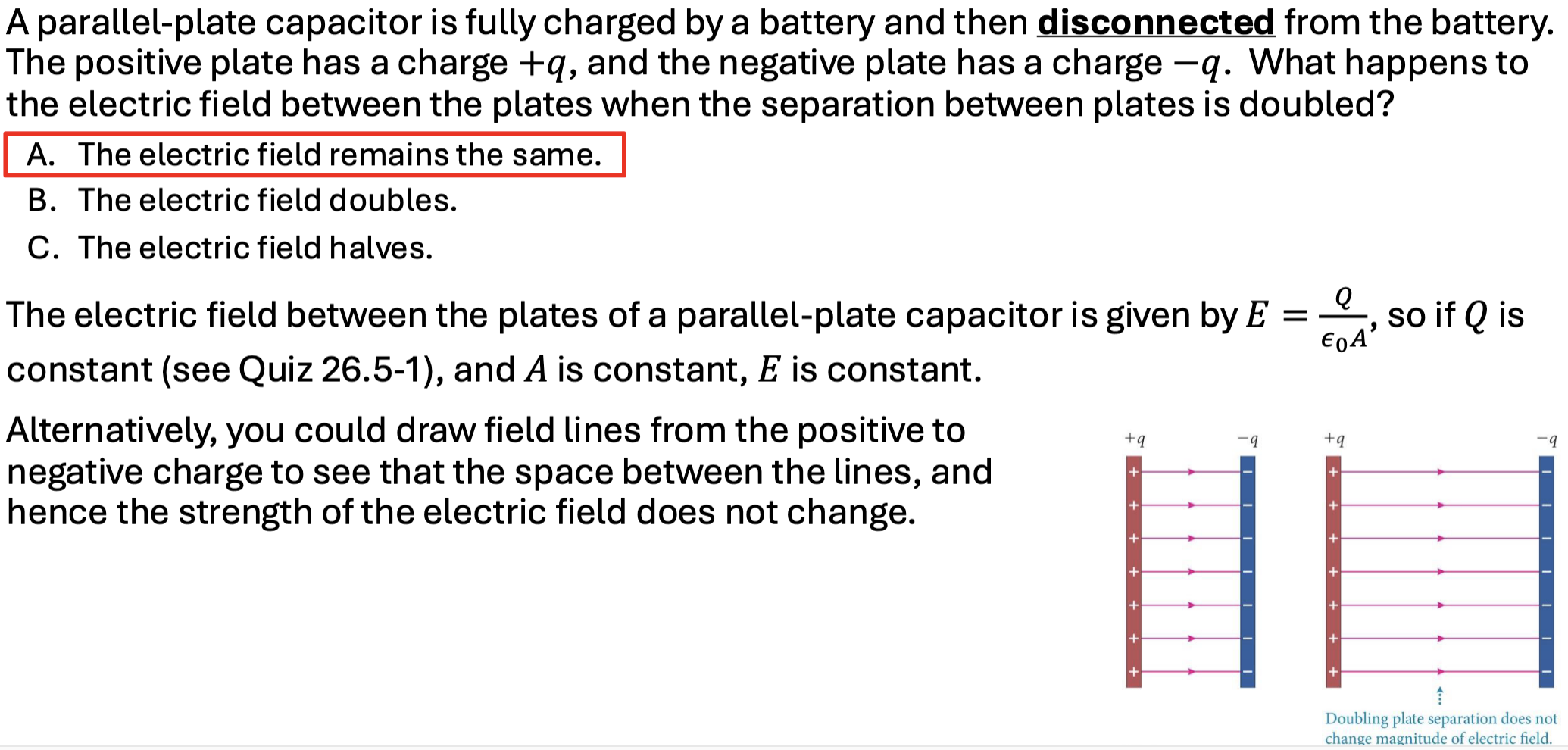

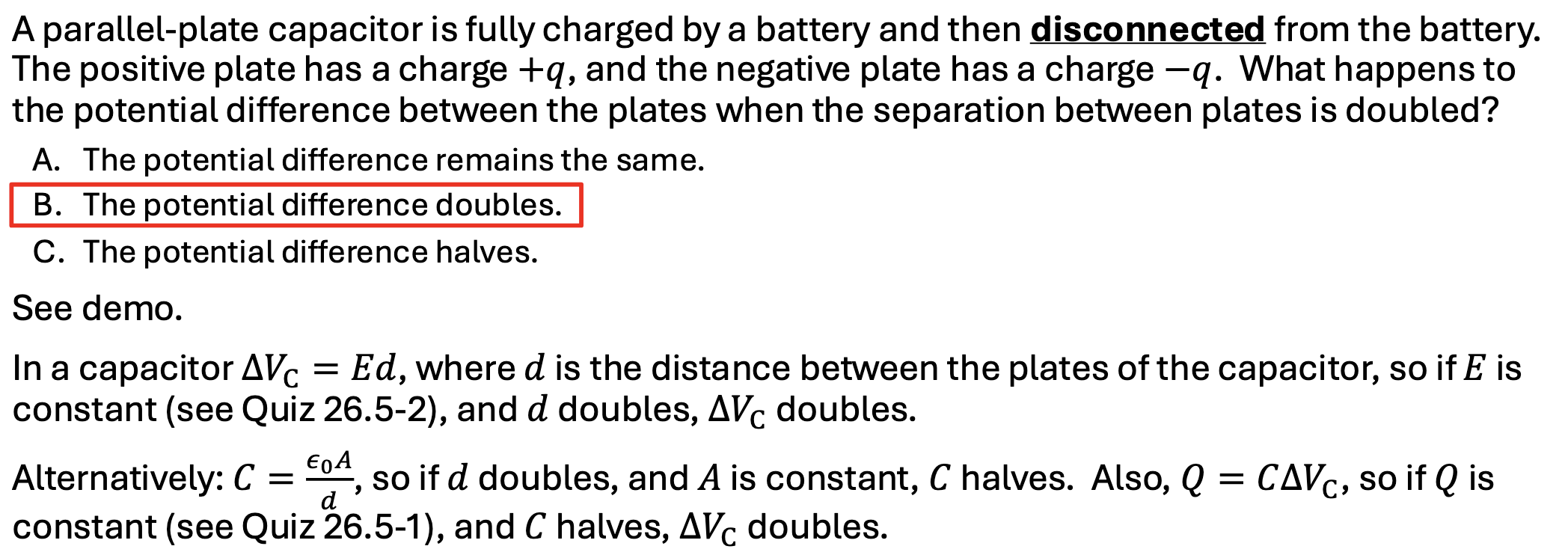

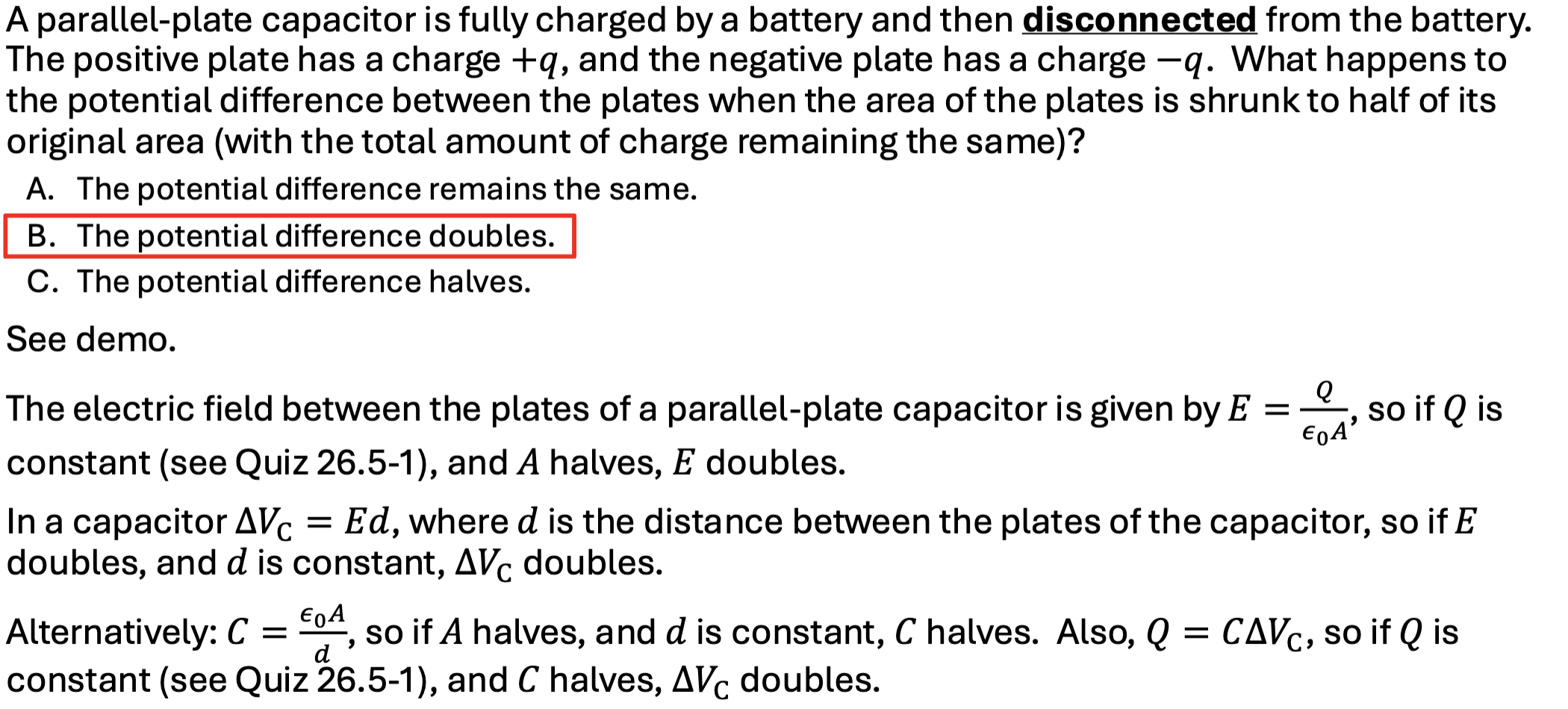

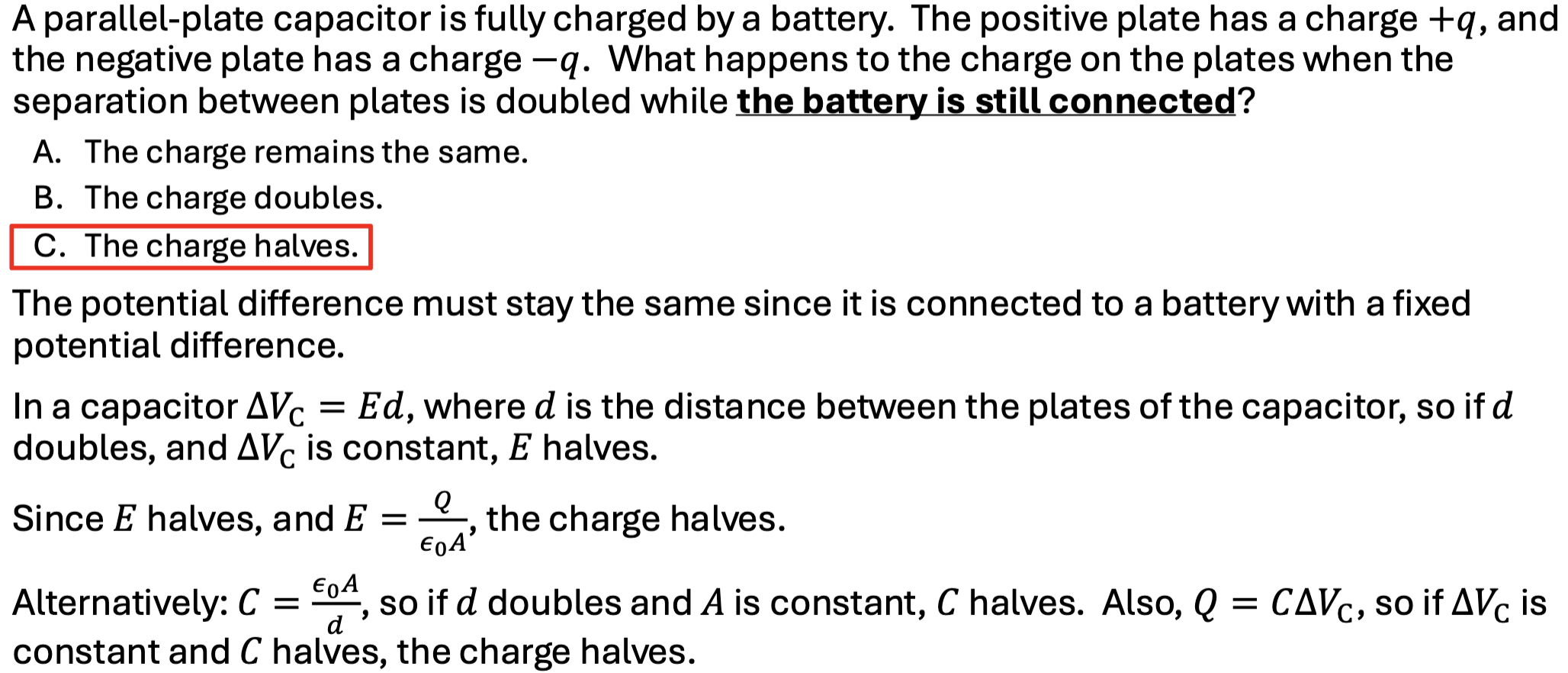

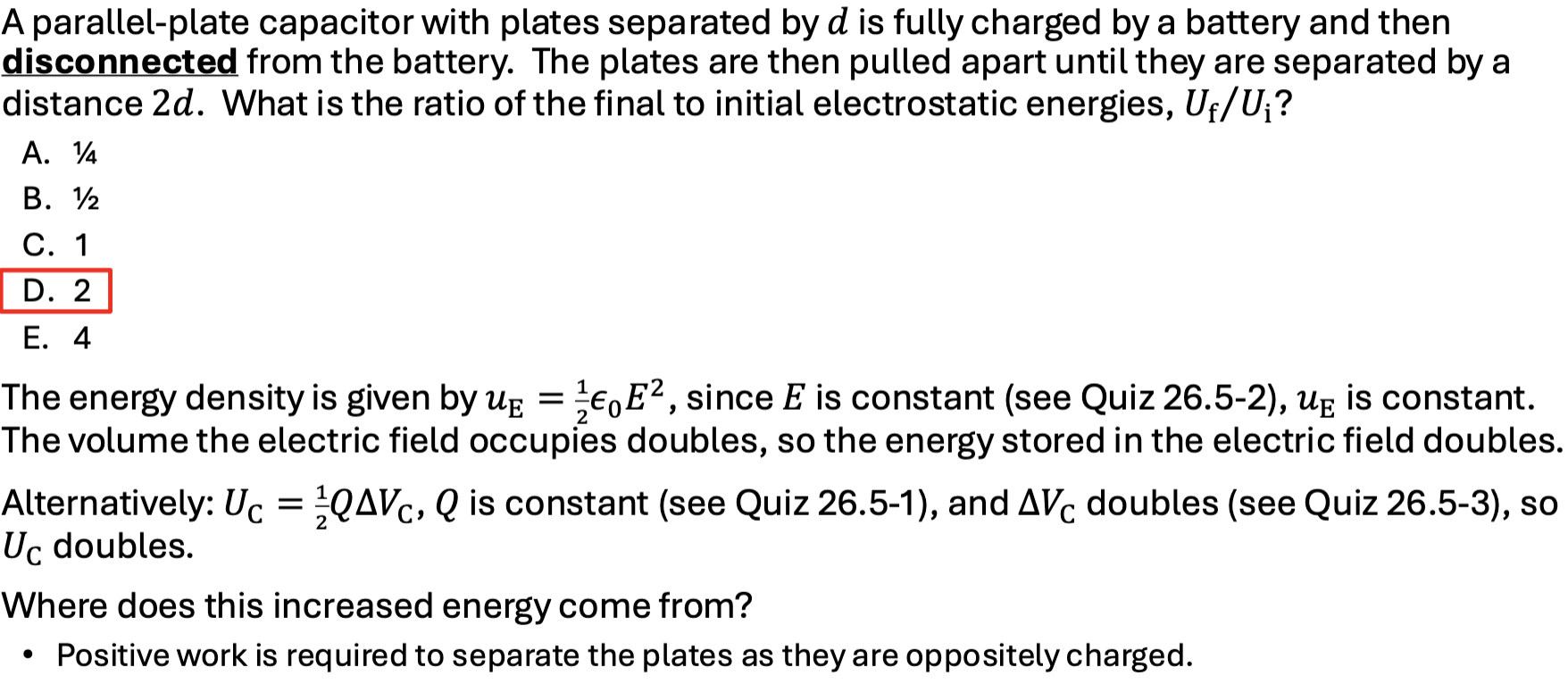

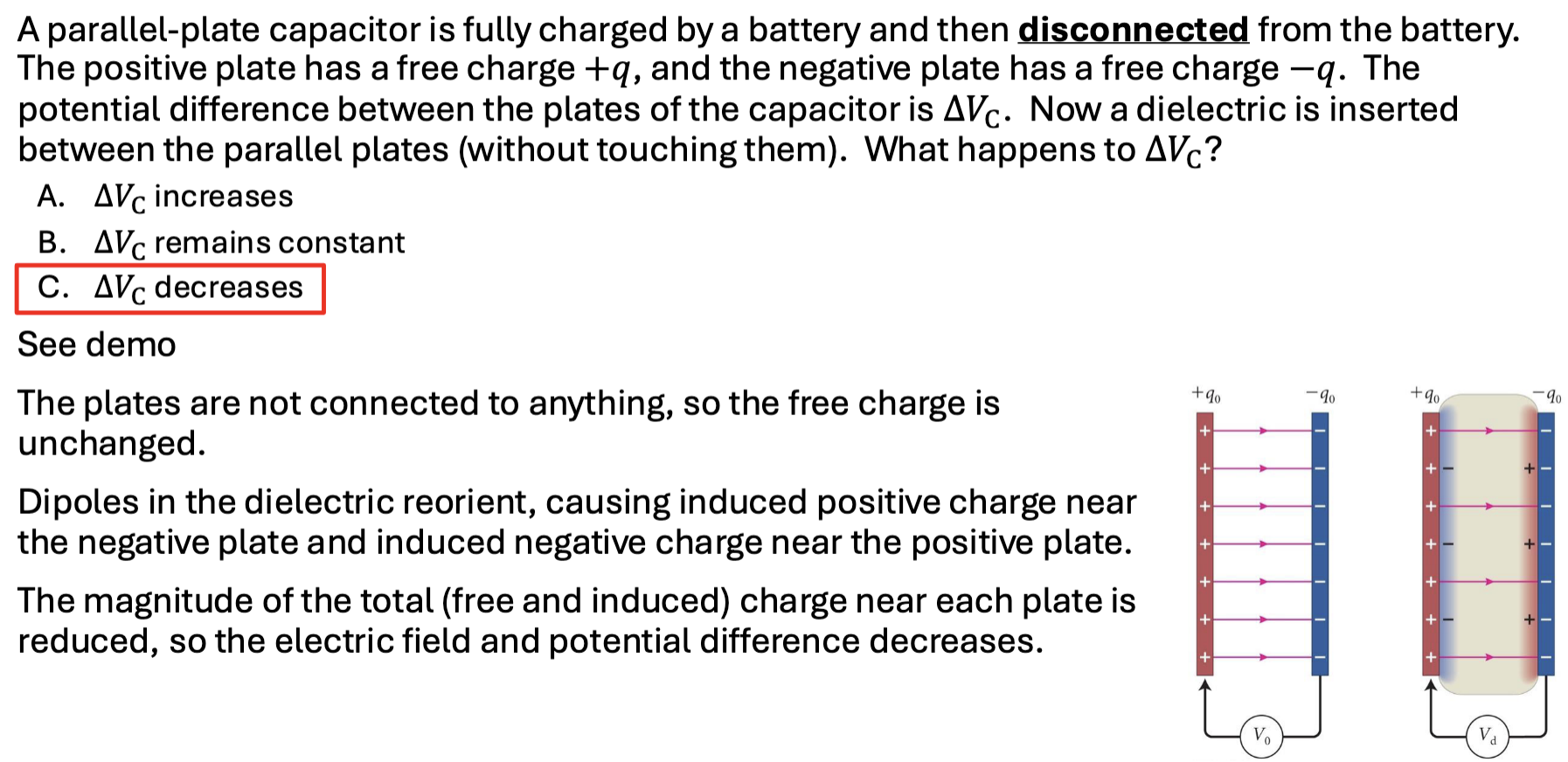

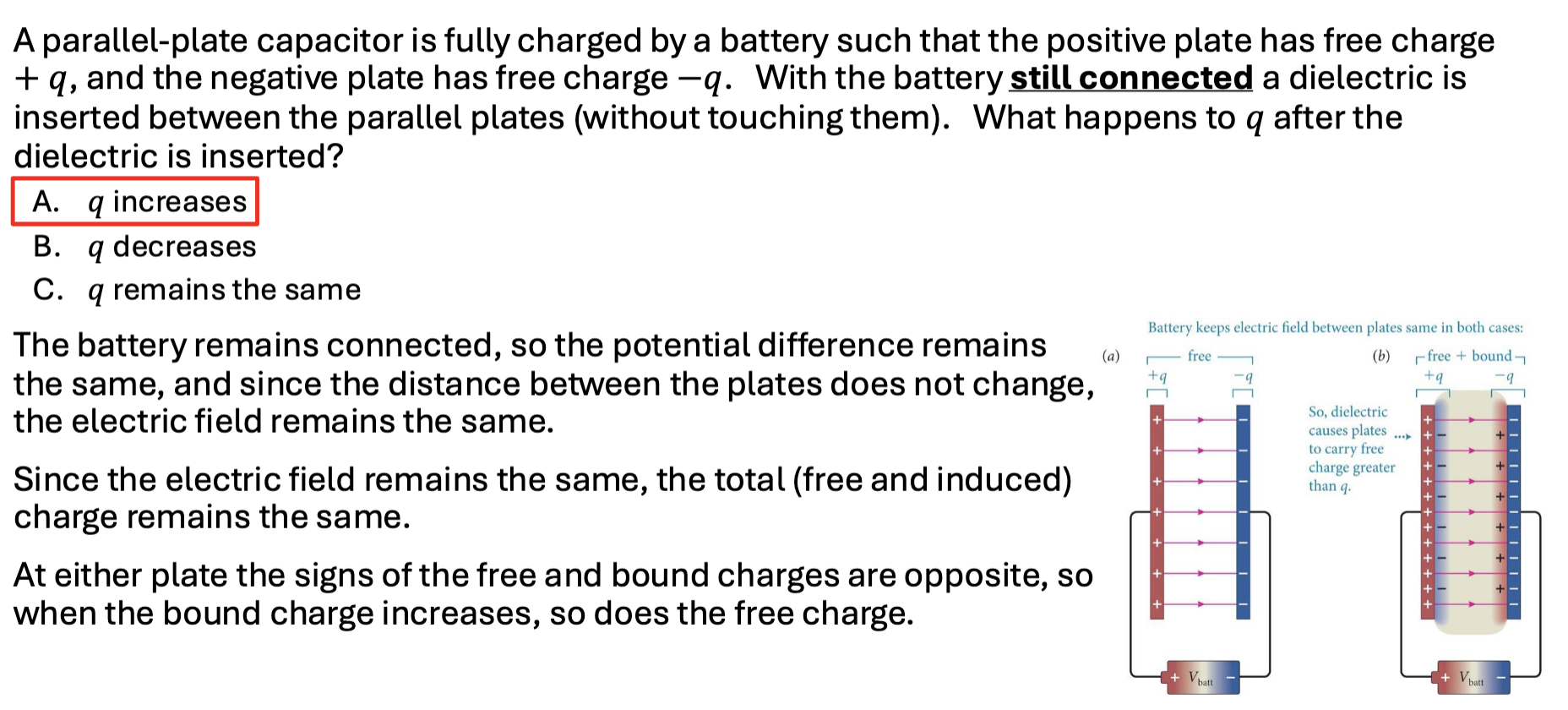

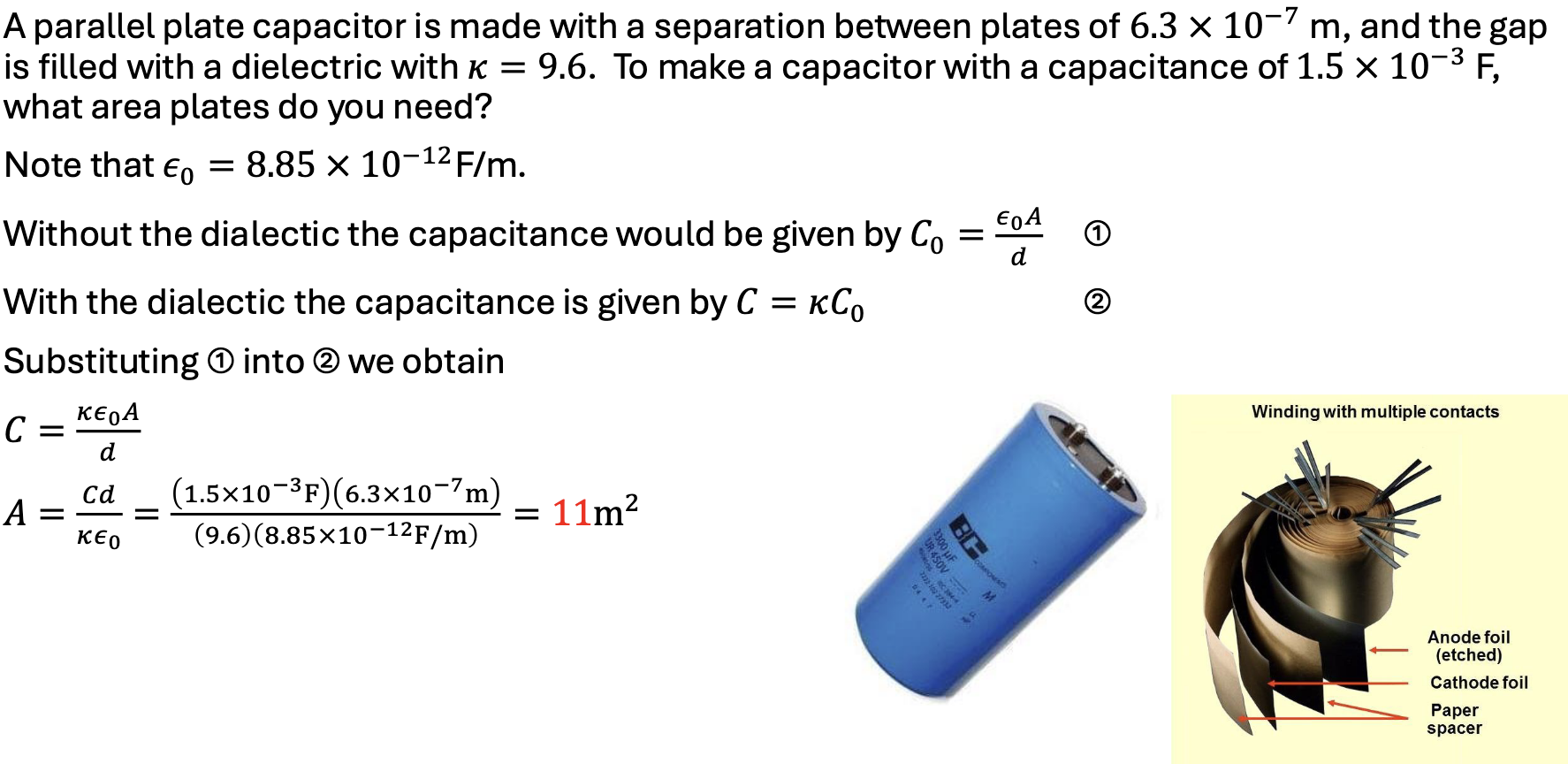
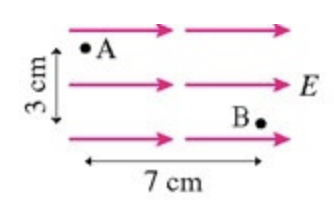
Which point, A or B, has a larger electric potential? What is the potential difference between A and B? Assume that E=1000V/m.
A
Δ V = - 70.0 V
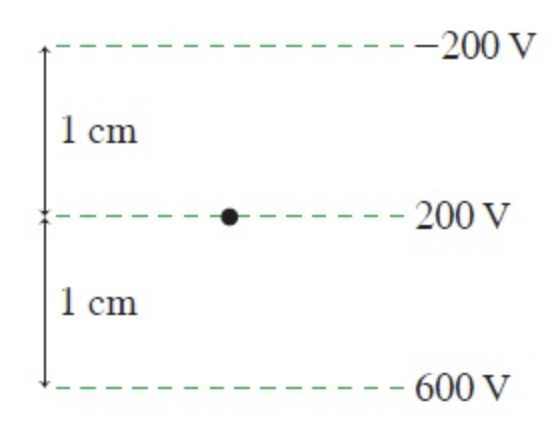
What is the direction of the electric field at the dot? What is the magnitude of the electric field at the dot?
Up
E = 40 kV/m
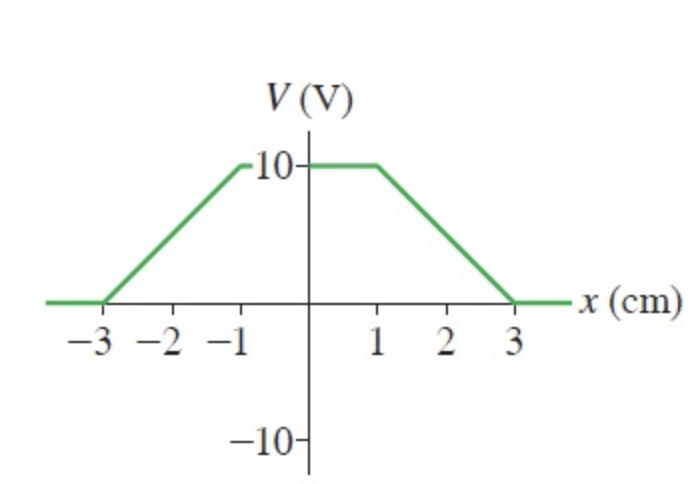
(Figure 1) shows a graph of V versus x in a region of space. The potential is independent of y and z. What is Ex at x = -2 cm? What is Ex at x = 0 cm? What is Ex at x = 2 cm?
Ex = - 500 V/m
Ex = 0 V/m
Ex = 500 V/m
What is the emf of a battery that does 24 J of work to move 4.5×1019 electrons from the positive to the negative terminal in 2.0 s?W
e = 3.3 V
Two parallel 4.0-cm-diameter flat aluminum electrodes are spaced 0.50 mm apart. The electrodes are connected to a 150 V battery. What is the capacitance? (in pF). What is the magnitude of the charge on each electrode? (in nC)
C = 22 pF
Q = 3.3 nC
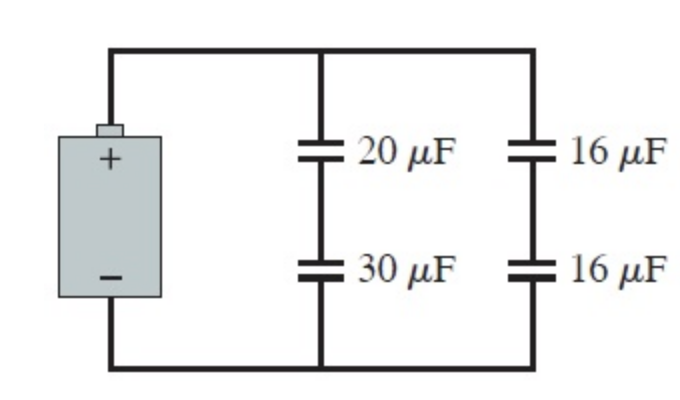
Consider four capacitors in (Figure 1). What is the equivalent capacitance of the four capacitors?
Ceq = 20 μF
To what potential should you charge a 1.00 μF capacitor to store 1.10 J of energy?
1480 V
40.0 pJ of energy is stored in a 3.00 cm × 3.00 cm × 3.00 cm region of uniform electric field. What is the electric field strength?
E = 579 V/m

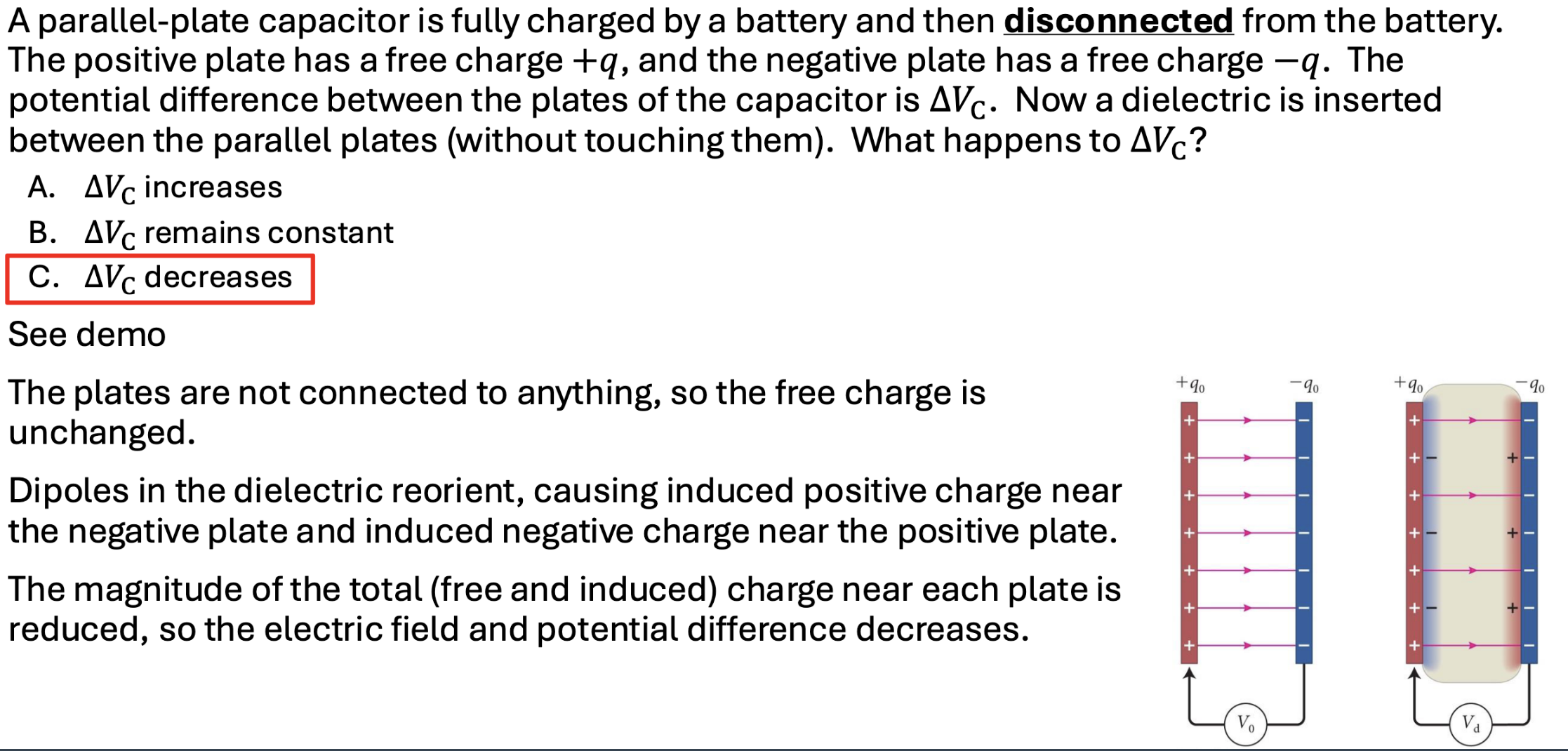




Two 6.0 mm × 6.0 mm electrodes are held 0.10 mm apart and are attached to 9.0 V battery. Without disconnecting the battery, a 0.10-mm-thick sheet of Mylar is inserted between the electrodes. What is the capacitor's potential difference before the Mylar is inserted? What is the capacitor's electric field before the Mylar is inserted? What is the capacitor's charge before the Mylar is inserted? What is the capacitor's potential difference after the Mylar is inserted? What is the capacitor's electric field after the Mylar is inserted?
Δ V = 9 V
E = 90 kV/m
Q = 29 pC
Δ Vc = 9 V
E = 90 kV/m
Q = 89 pC
A superconducting magnet carries a 100 A current through a 0.56-mm-diameter superconducting wire that is wound into a coil. What is the current density in the wire? How much charge flows through the wire in 12 minutes?
J = 4.1×108 A/m2
q = 7.2 × 104 C
A 17-cm-long nichrome wire is connected across the terminals of a 1.5 V battery. What is the electric field inside the wire? Assume the resistivity of nichrome is 1.5×10−6Ω⋅m. What is the current density inside the wire? If the current in the wire is 1.2 A , what is the wire's diameter?
E = 8.8 V/m
J = 5.9 × 106 A/m2
d = 0.51 mm

The two segments of the wire in the figure (Figure 1)have equal diameters but different conductivities σ1 and σ2. Current I passes through this wire.
1/6
The femoral artery is the large artery that carries blood to the leg. What is the resistance of a 25-cm-long column of blood in a 1.1-cm-diameter femoral artery? The conductivity of blood is 0.63 Ω−1m−1.
R = 4200 Ω
Household wiring often uses 2.0-mm-diameter copper wires. The wires can get rather long as they snake through the walls from the fuse box to the farthest corners of your house. What is the potential difference across a 19-m-long, 2.0-mm-diameter copper wire carrying an 8.0 A current?
ΔV = 0.82 V
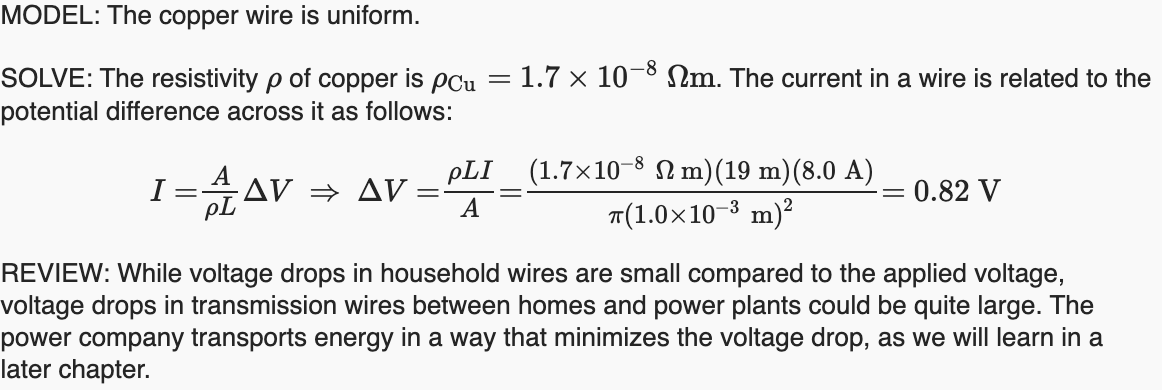
Electric energy of a capacitor is essentially stored in ____.
A) the polarized particles between the plates
B) the current running between the plates
C) the free charges between the plates
D) the charges stored on the plates
E) the electric field between the plates
E) the electric field between plates
The electric field in a current-carrying wire is due to ________.
A) the wire's capacitance
B) the battery to which the wire is attached
C) the electronegativity of the metal
D) a non-uniform distribution of surface charge on the wire
E) a non-uniform distribution of charge within the wire
D) a non-uniform distribution of surface charge on the wire
Kirchhoff's junction law is based on conservation of ____.
A) mass
B) energy
C) momentum
D) charge
E) current
D) Charge
The current density in a wire is proportional to the electric field strength. The constant of proportionality is the wire's _____.
A) resistance
B) permittivity
C) emissivity
D) conductivity
D) conductivity
How long must a 0.62-mm-diameter aluminum wire be to have a 0.48 A current when connected to the terminals of a 1.5 V flashlight battery? What is the current if the wire is half this length?
L = 34 m
I = 0.96 A
A negative charge speeds up in a region of space where the electric potential is ____.
A) maximum
B) minimum
C) increasing
D) decreasing
E) zero
C) Increasing
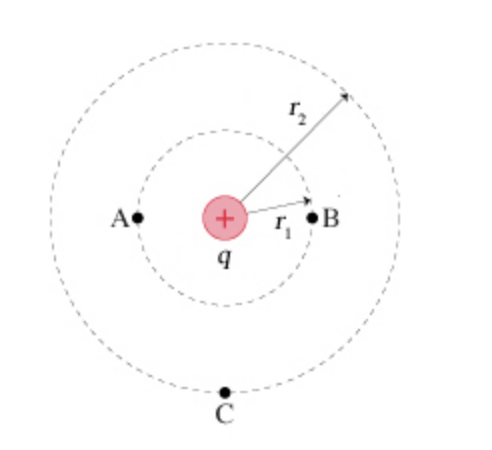
What is the electric potential at points A, B, and C in (Figure 1)? Suppose that q = 2.0 nC, r = 1.3 cm, and r2 = 2.2 cm. What is the potential difference ΔVAB=VB−VA? What is the potential difference ΔVCB=VB−VC?
VA, VB, VC = 1400,1400,820 V
ΔVAB = 0 V
ΔVCB = 570 V
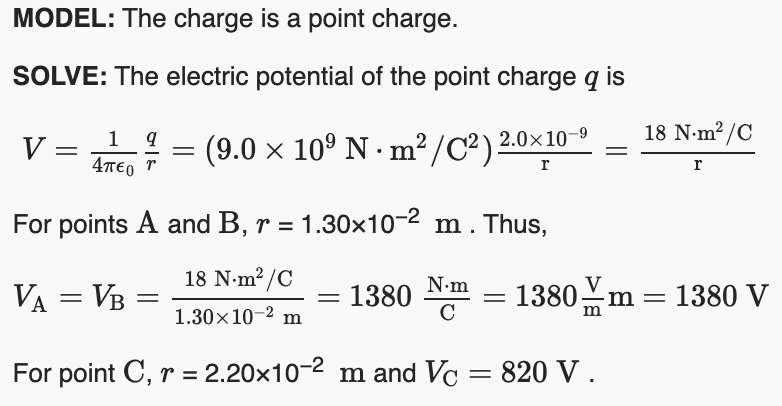
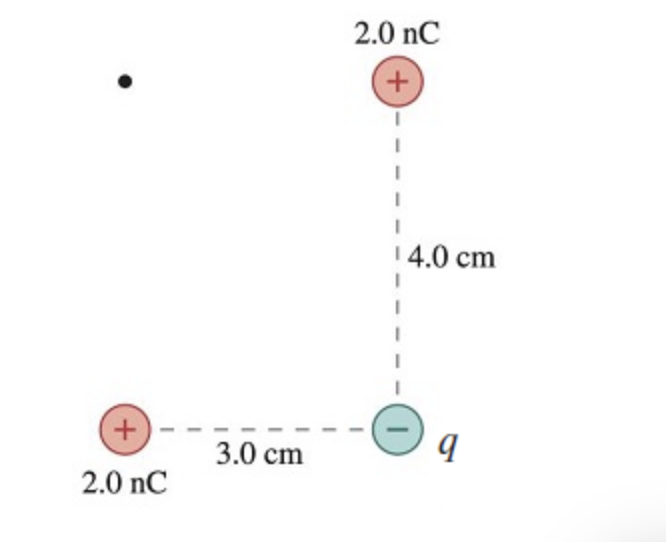
In (Figure 1), q = -2.2 nC. What is the electric potential at the point indicated with the dot?
V = 650 V
What is the potential difference between xi = 20 cm and xf = 30 cm in the uniform electric field Ex = 1000 V/m?
Vf−Vi = -100 V
The electric field is ________ equipotential surfaces and points ________.
perpendicular to, "downhill"
perpendicular to, "uphill"
perpendicular to, toward 0 V
tangent to, "downhill"
tangent to, "uphill"
tangent to, toward 0 V
perpendicular to, "downhill"
In the interior of a positively charged conductor, ____.
the electric potential is zero
the electric potential is a constant
the electric potential increases from the center toward the surface
the electric potential decreases from the center toward the surface
the electric potential is undefined
the electric potential is a constant
When charges are separated by the chemical reactions in a battery, the work done per charge is called the ____.
capacitance
internal resistance
current
terminal voltage
emf
emf
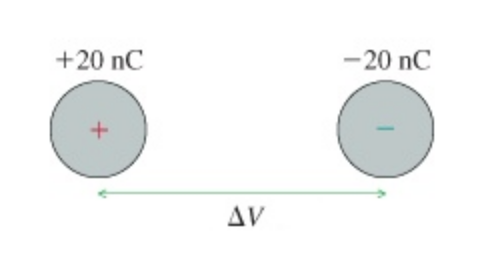
What is the capacitance of the two metal spheres shown in (Figure 1)? Assume that ΔV=180V. (In pF).
C = 110 pF
![<p><span><span>Suppose that the magnetic field at point 1 is </span></span><span style="line-height: normal;"><span>B1</span></span> = 26 <span style="line-height: normal;"><span>mT</span></span> <span><span>in</span></span> <span>(</span><span><u><span>Figure 1</span></u></span><span>)</span>.<span><span> Assume that the wires overlap closely at 2 and 3, that each point is the same distance from nearby wires, and that all other wires are too far away to contribute to the field. What is the magnetic field strength at points 2 to 4 in </span></span><span>(</span><span><u><span>Figure 1</span></u></span><span>)</span>? [in nT],</p>](https://knowt-user-attachments.s3.amazonaws.com/9da8a502-dd53-41b6-8d85-2a97cb9476b2.png)
Suppose that the magnetic field at point 1 is B1 = 26 mT in (Figure 1). Assume that the wires overlap closely at 2 and 3, that each point is the same distance from nearby wires, and that all other wires are too far away to contribute to the field. What is the magnetic field strength at points 2 to 4 in (Figure 1)? [in nT],
B2 = 52 nT
B3 = 0 nT
B4 = 52 nT
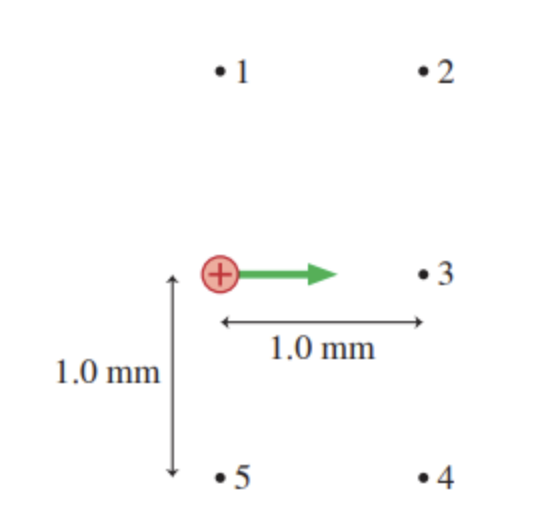
The magnetic field vector B1 at point 1 has the magnitude of 1.2 nT and points out of the figure. What are the magnetic field vectors B⃗ 2 through B⃗ 5 at points 2 through 5 due to the moving charge in (Figure 1)? Determine the magnitudes and directions of all the magnetic field vectors.
B2 = 0.42 nT; Out of a figure
B3 = 0 nT; No direction
B4 = 0.42 nT; Into the figure
B5 = 1.2 nT; Into the figure
The magnetic field at the center of a 0.700-cm-diameter loop is 2.40 mT. What is the current in the loop? A long straight wire carries the same current you found in part a. At what distance from the wire is the magnetic field 2.40 mT ?
13.4 A
1.11 × 10-3 m
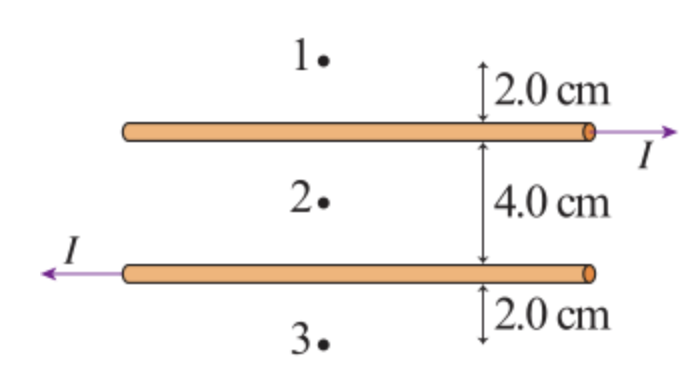
Assume that I = 14 A in (Figure 1). What is the magnetic field strength at point 1, point 2, and point 3? What is the direction of the magnetic field strength at point 1, point 2, and point 3?
to the left
into the page
out of the page
to the right
B1 = 9.3 × 10-5 T; 3 - Out of the page
B2 = 2.8 × 10-4 T; 2 - Into the page
B3 = 9.3 × 10-5 T; 3 - Out of the page

A small, square loop carries a 29 A current. The on-axis magnetic field strength 42 cm from the loop is 4.8 nT . What is the edge length of the square? Answer in cm.
L = 0.78 cm
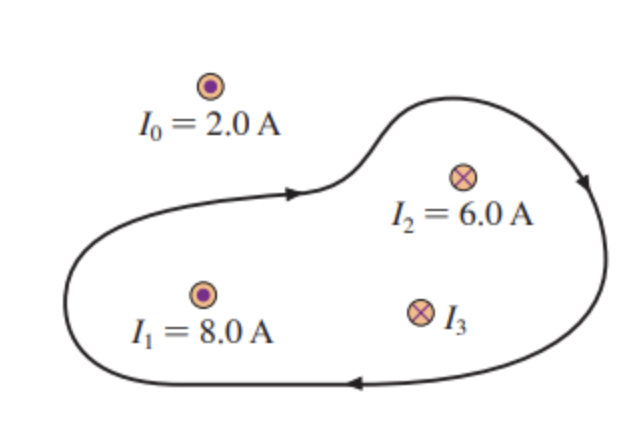
The value of the line integral of B ⋅ds around the closed path in (Figure 1) is 8.77×10−6 Tm. What is I3?
I3 = 9.0 A
Magnetic resonance imaging needs a magnetic field strength of 1.5 T. The solenoid is 1.8 m long and 75 cm in diameter. It is tightly wound with a single layer of 2.1-mm-diameter superconducting wire. What current is needed?
I = 2500 A

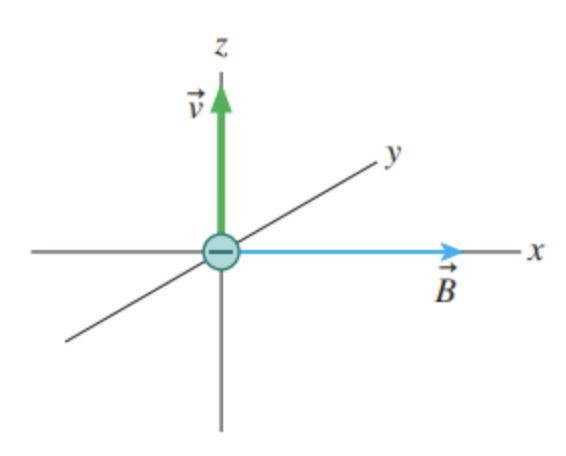
An electron moves in the magnetic field B = 0.60 i^T with a speed of 1.0×107m/s in the directions shown in (Figure 1). What is magnetic force F on the electron for (Figure 1)?
Fx, Fy, Fz = 0,-0.96,0 pN


An electron moves in the magnetic field B = 0.60 i^T with a speed of 1.0×107m/s in the directions shown in (Figure 2). What is magnetic force F on the electron for (Figure 2)?
Fx, Fy, Fz = 0,0.68,0 pN

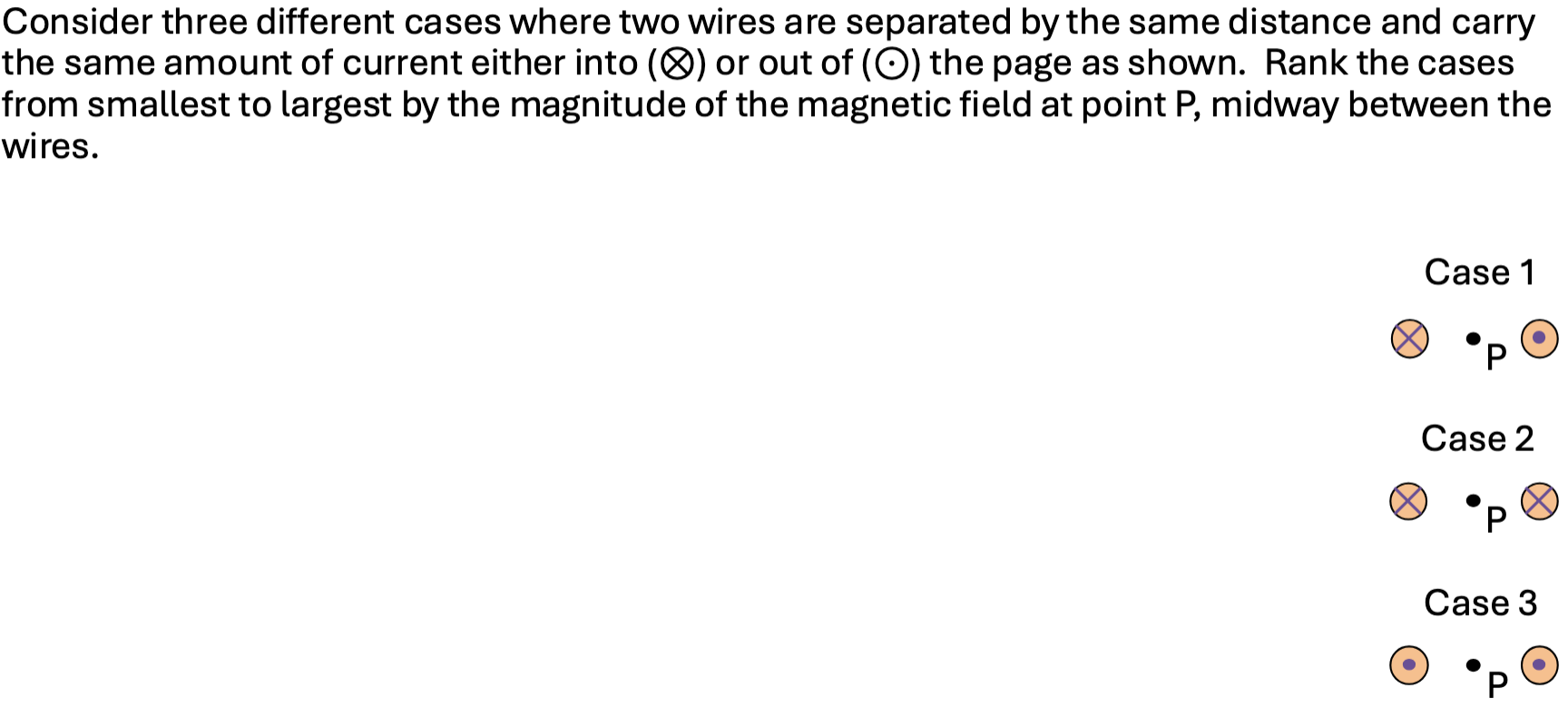
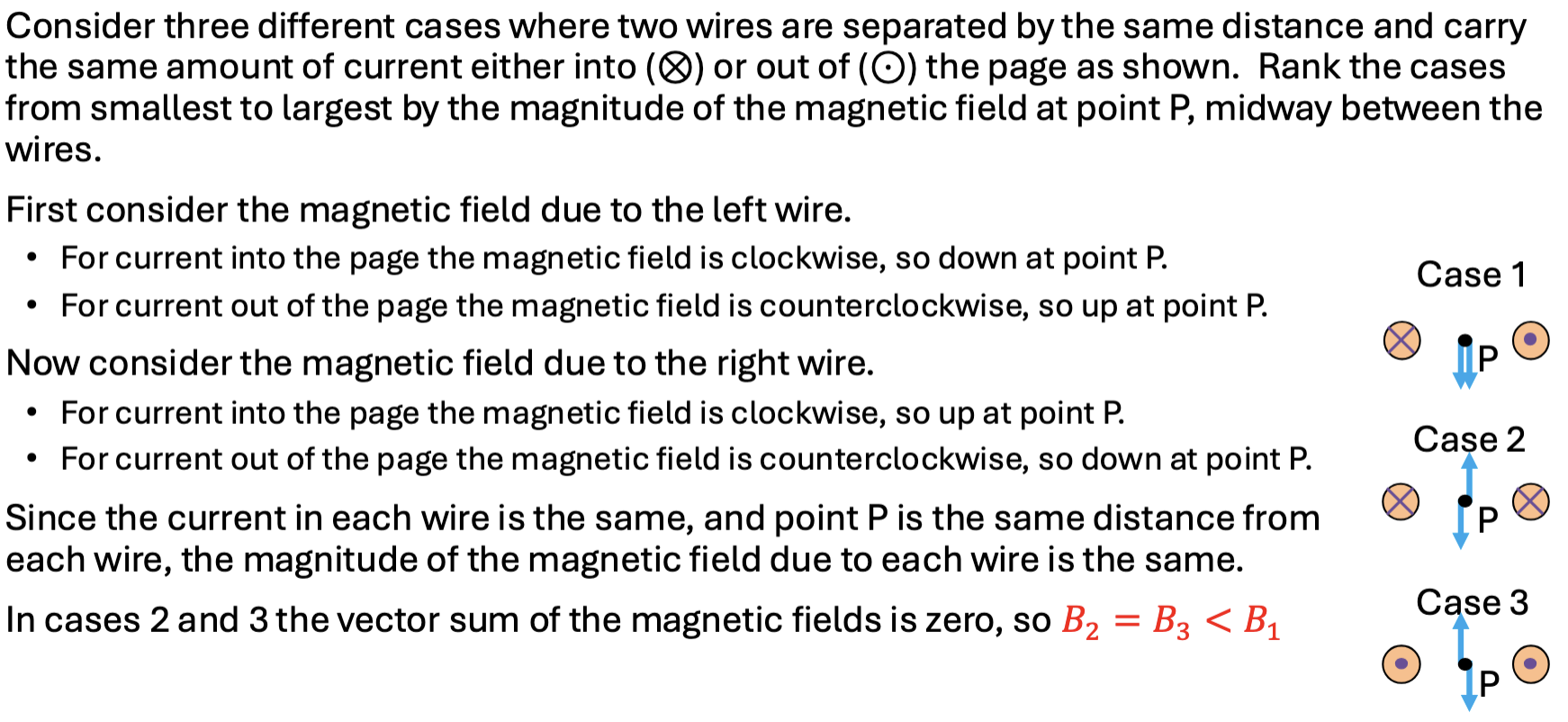

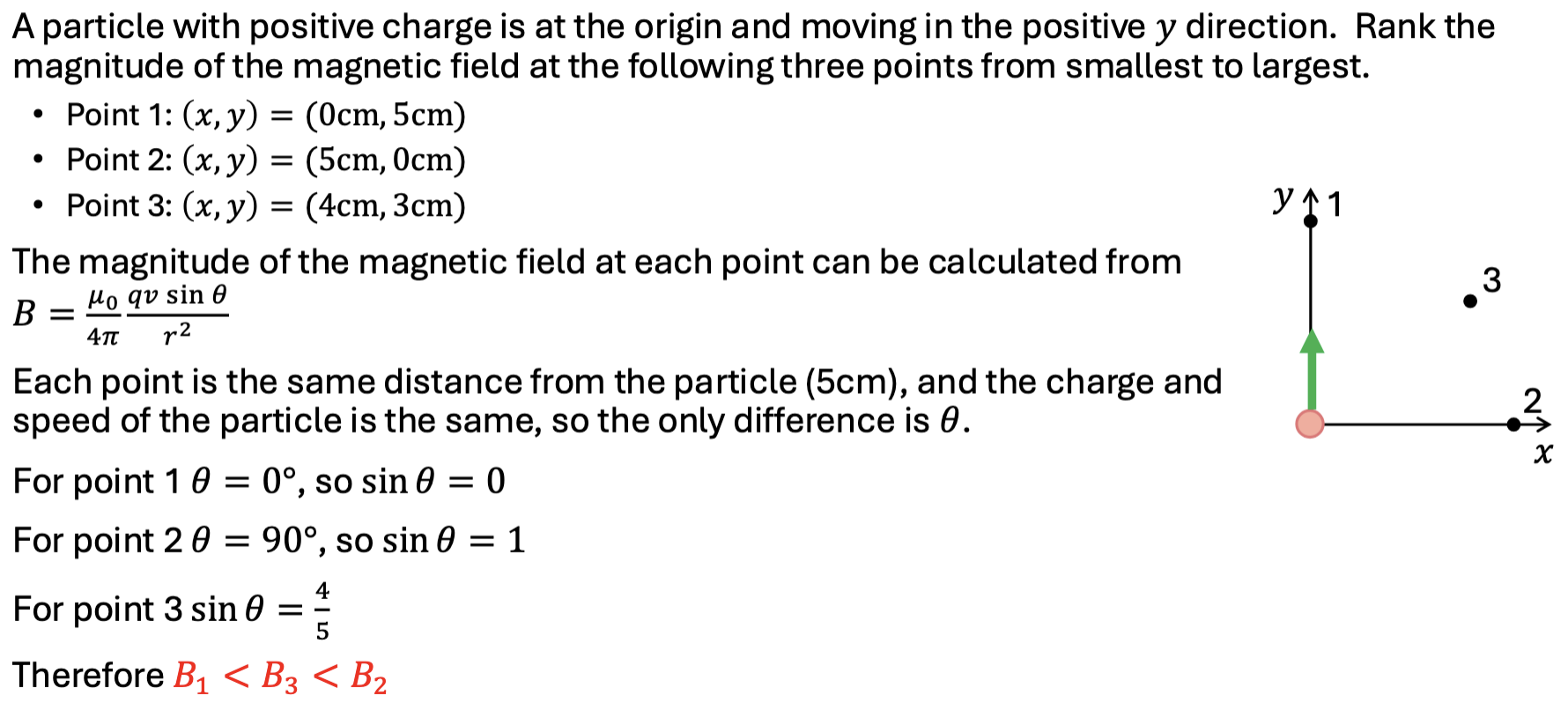

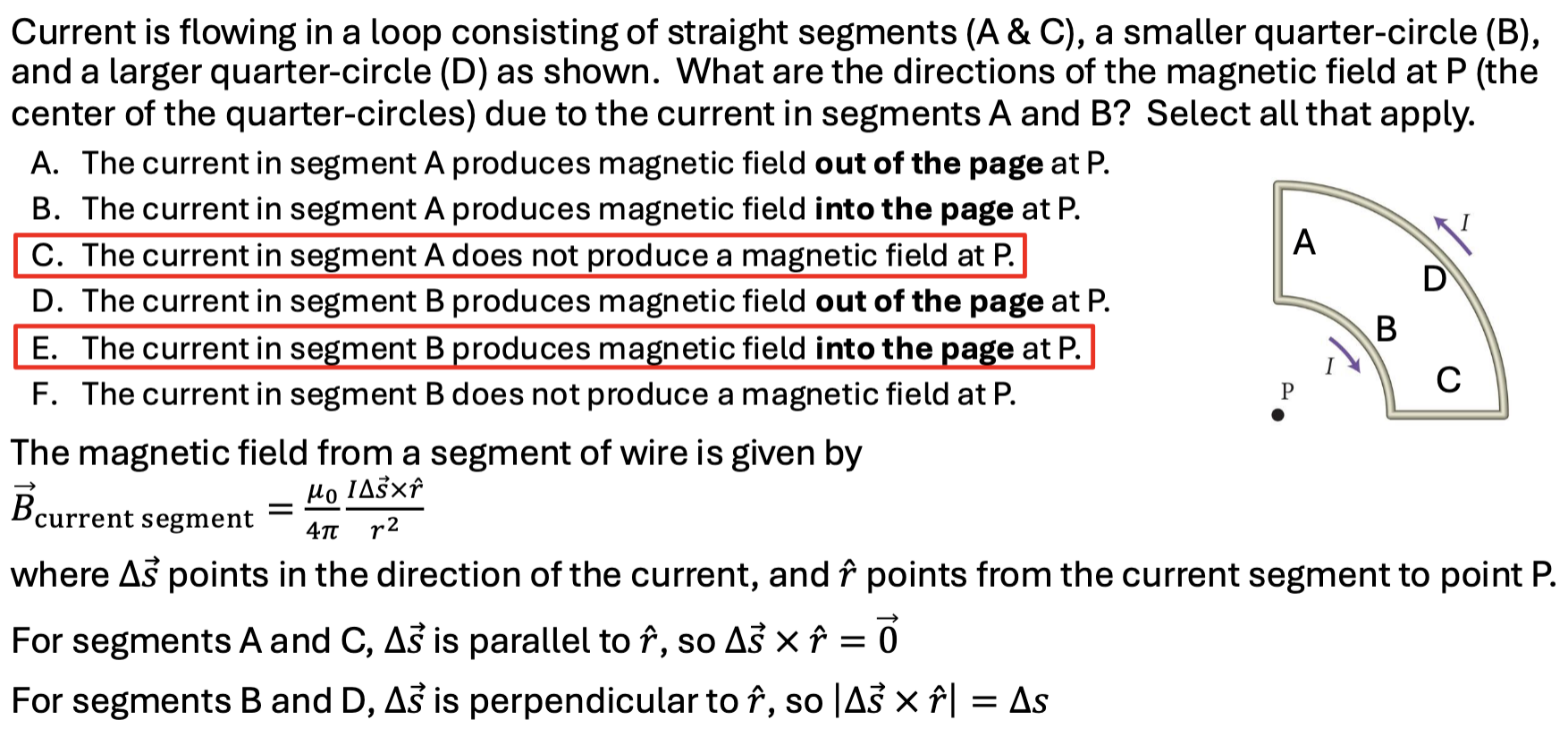
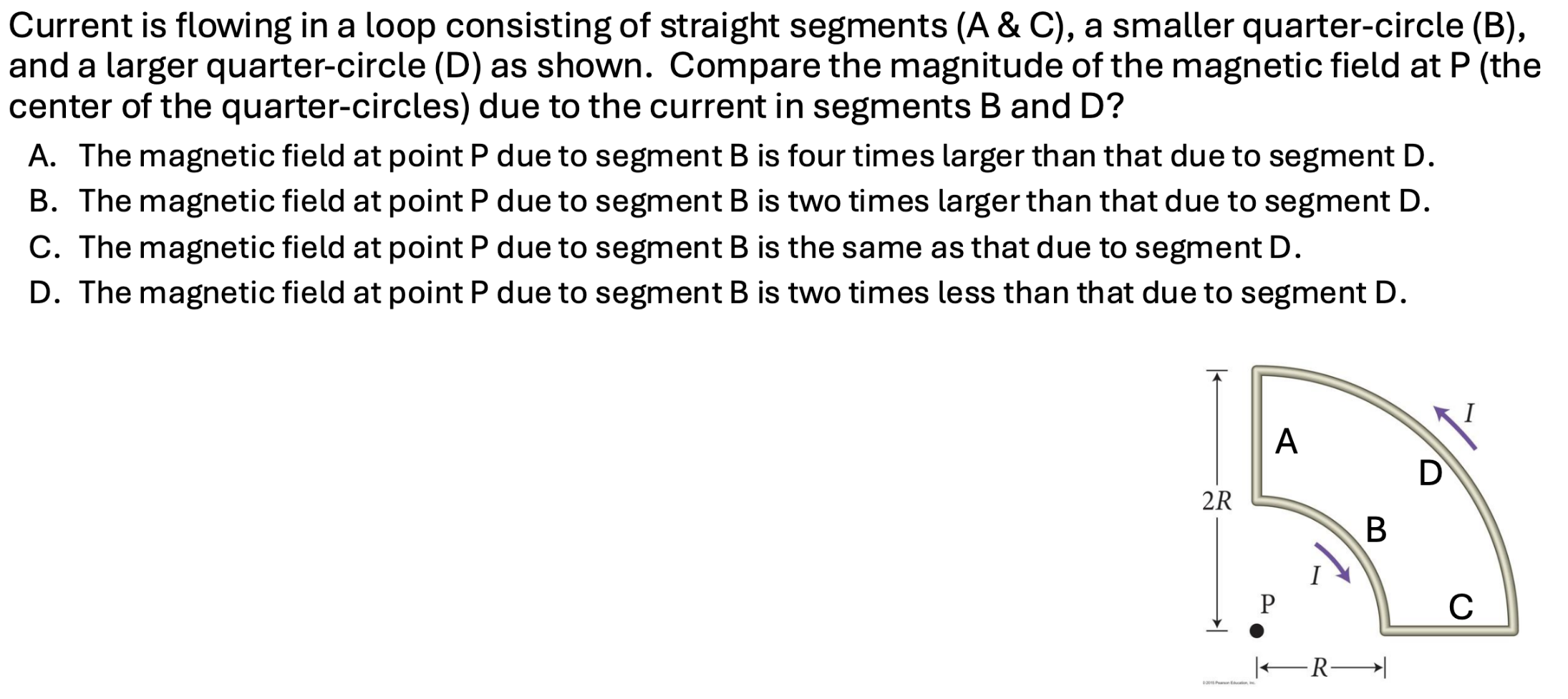
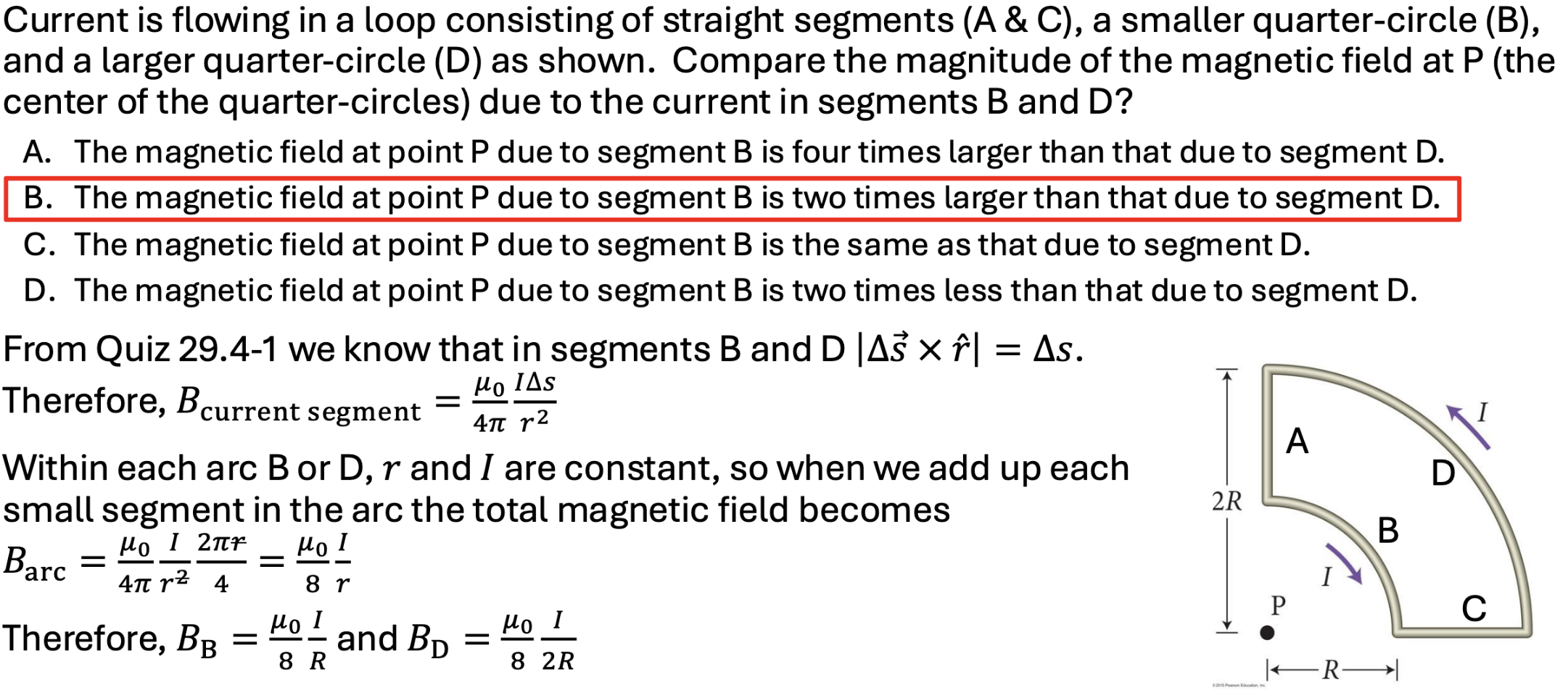

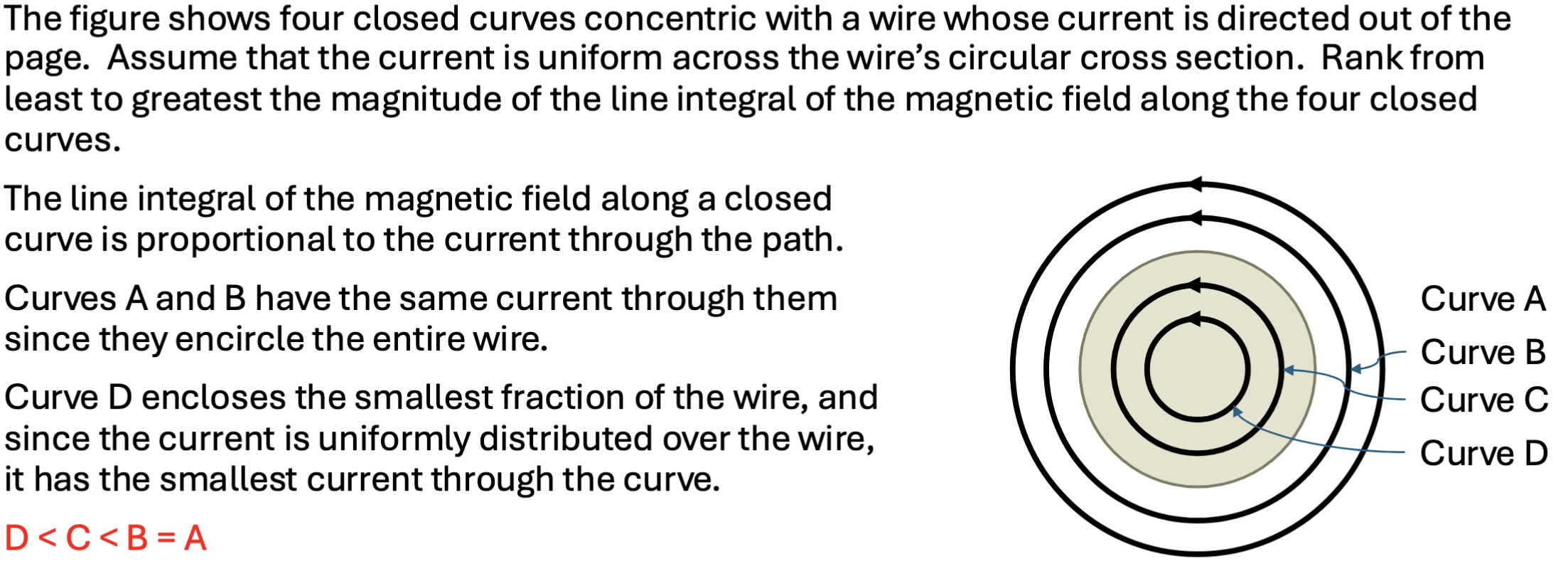
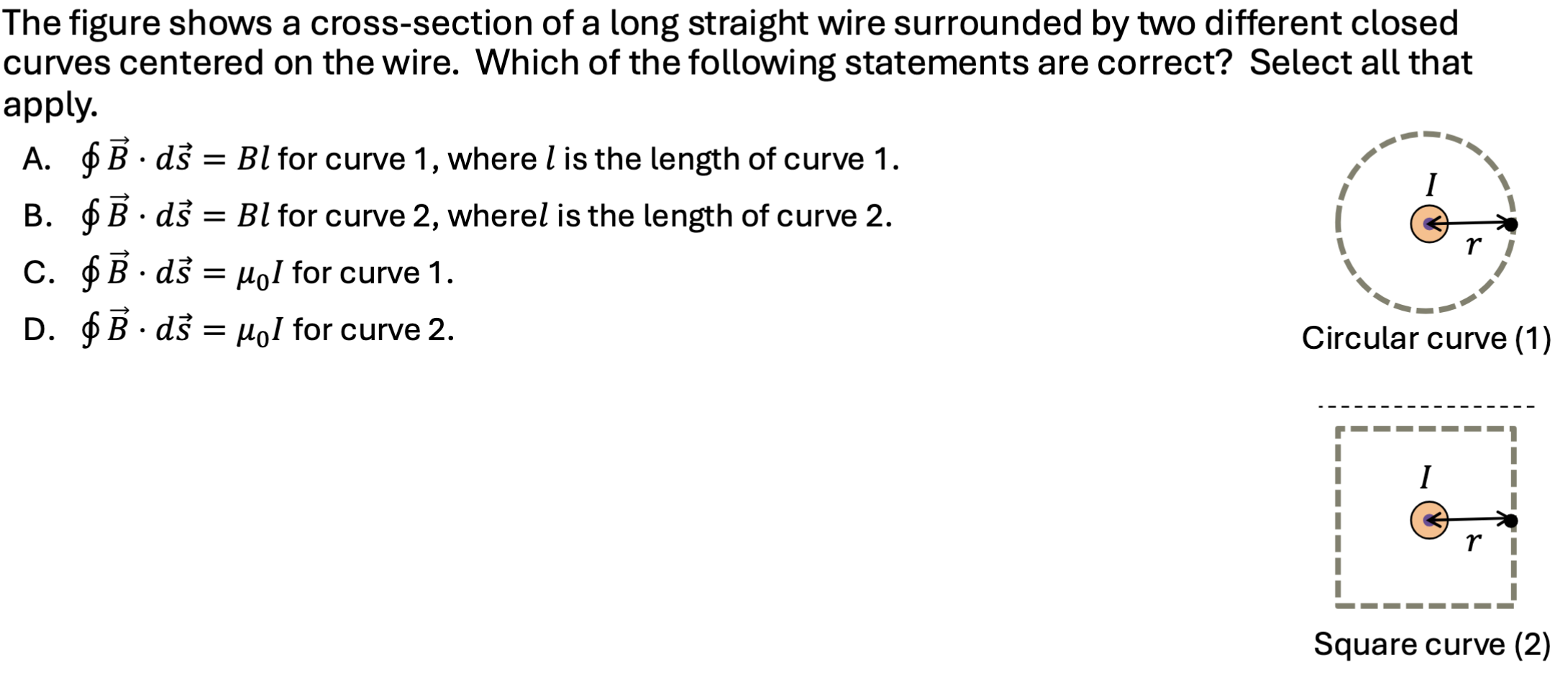
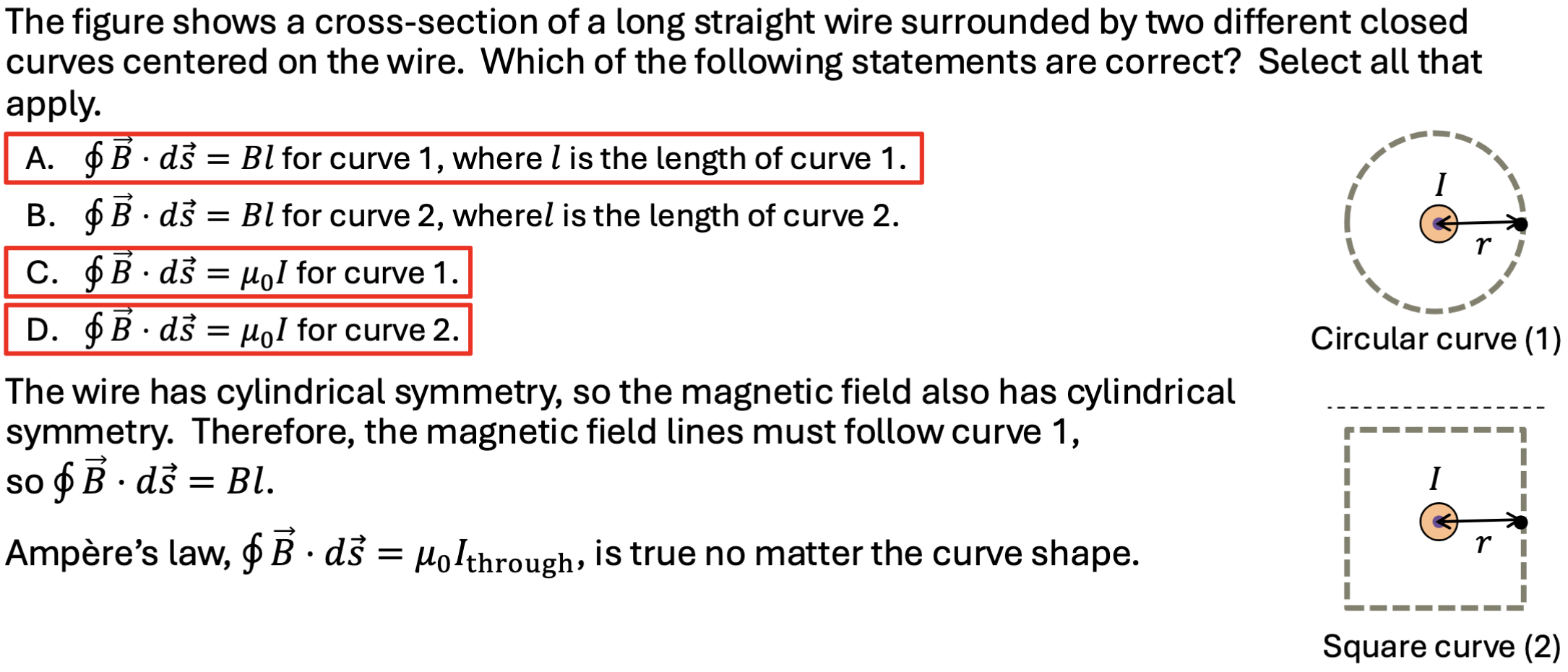


The magnetic field of a solenoid is analogous to the electric field of a ____.
charged wire
charged disk
charged parallel-plate capacitor
dipole
battery
charged parallel-plate capacitor
The magnetic force on a charged particle in a magnetic field is zero if ____.
Select all that apply.
the charged particle is at rest
the charged particle is moving
the charged particle moves perpendicular to the magnetic field
the charged particle moves parallel to the magnetic field
The magnetic force on a charged particle is never zero.
the charged particle is at rest & 4. the charged particle moves parallel to the magnetic field
Two parallel, nearby, straight wires carry currents in the same direction. What happens?
The wires exert attractive forces on each other.
The wires exert repulsive forces on each other.
The wires exert torques on each other.
The currents undergo exponential decay.
Nothing
The wires exert attractive forces on each other
A square current loop 5.50 cm on each side carries a 550 mA current. The loop is in a 0.900 T uniform magnetic field. The axis of the loop, perpendicular to the plane of the loop, is 30∘ away from the field direction. What is the magnitude of the torque on the current loop?
τ = 7.49 × 10-4 N x m